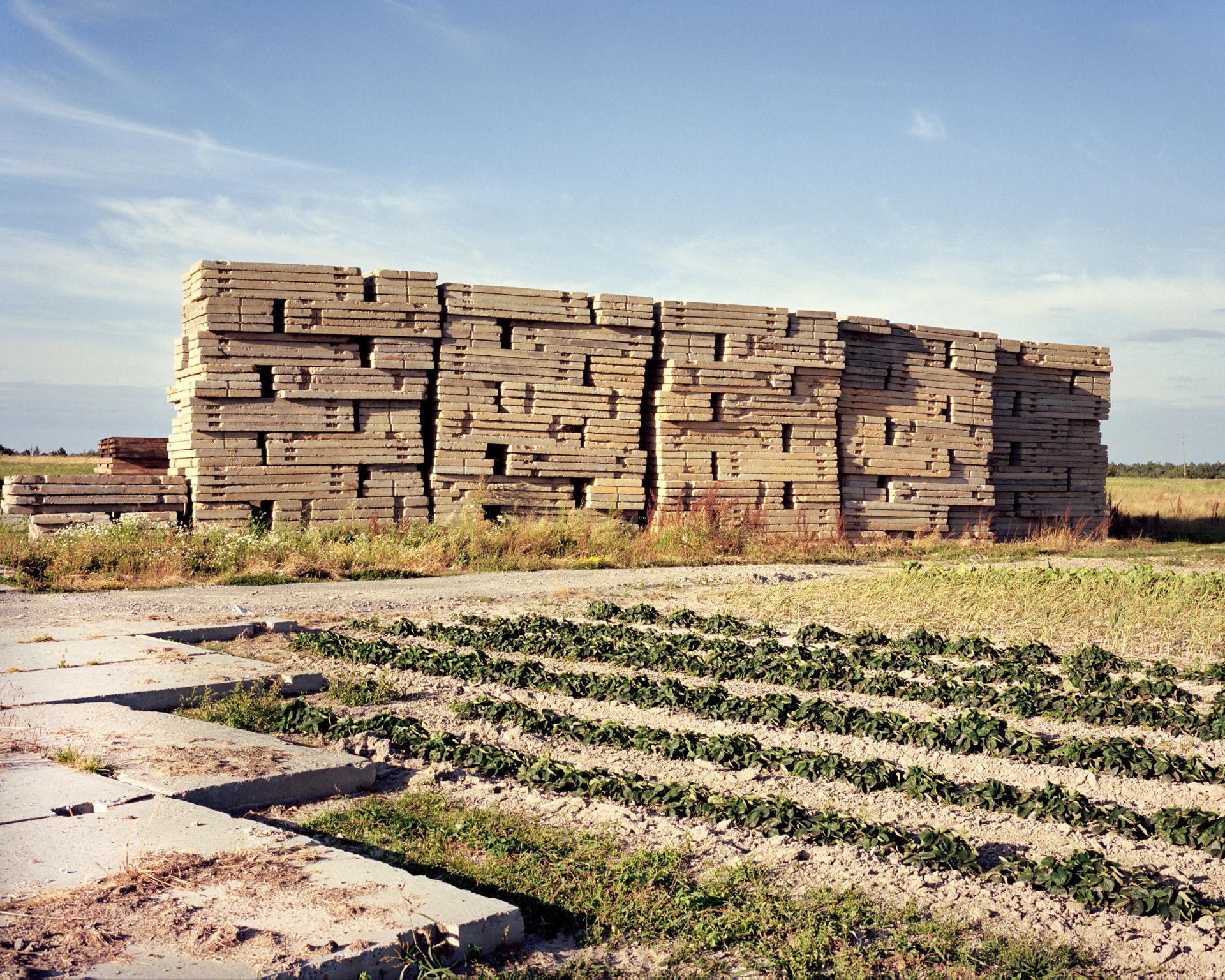New opportunities in unconventional gas exploitation let Europe dream of lightening its dramatic dependence on Russian supplies.
Fracking, or hydraulic fracturing, is the controversial method used to drill this type of gas. It is an invasive process that employs high-pressure water jets mixed with specific chemicals to break the shale rocks and to extract the gas contained in them. According to some studies, fracking would have serious consequences on the environment and it would require a strict regulation, which is still absent from the vague energy policy of the European Union.
Fracking, or hydraulic fracturing, is the controversial method used to drill this type of gas. It is an invasive process that employs high-pressure water jets mixed with specific chemicals to break the shale rocks and to extract the gas contained in them. According to some studies, fracking would have serious consequences on the environment and it would require a strict regulation, which is still absent from the vague energy policy of the European Union.
Among the European countries interested in shale gas explorations, only three have currently granted permits for drilling to energy companies: Poland, United Kingdom and Romania.
Local farmers and activists have joined together a big anti- fracking movement that arose against this decision, while the first tests confirm that european unconventional gas deposits are poorer than expected and their extraction would have limited benefits and no significant impact on consumption.
Local farmers and activists have joined together a big anti- fracking movement that arose against this decision, while the first tests confirm that european unconventional gas deposits are poorer than expected and their extraction would have limited benefits and no significant impact on consumption.
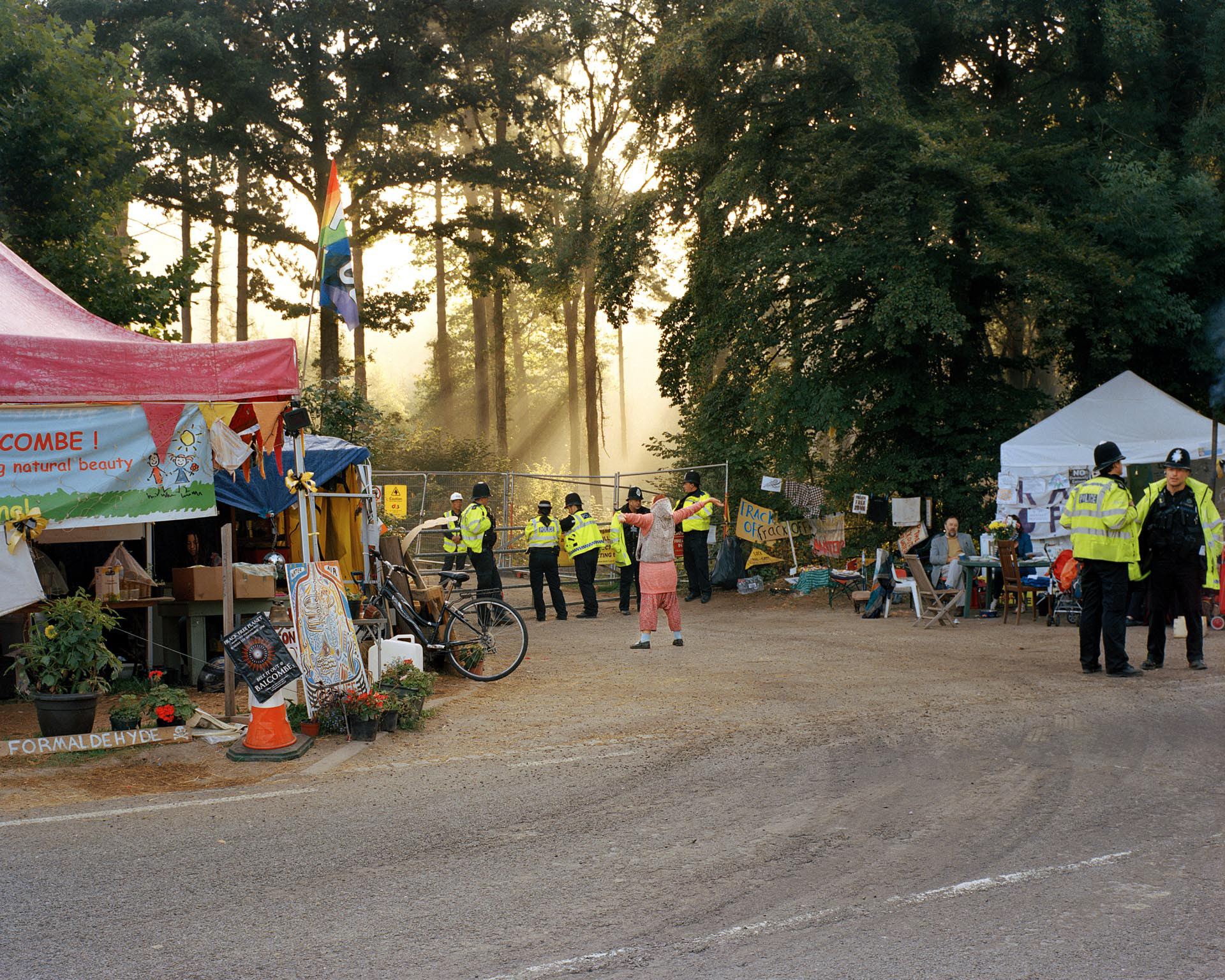
Balcombe, United Kingdom. An anti-fracking protester in front of the gate of the Balcombe drilling site, West Sussex. From the 25th of July 2013, part of the population of Balcombe and activists from all over Britain gathered against unconventional gas explorations. They initially occupied the land on which the rig was supposed to be erected and then the road that leads towards Brighton. The so-called Great Gas Gala lasted 68 days: it did not prevent Cuadrilla from drilling, but it was a first and important moment of self-awareness for the British anti-fracking movement
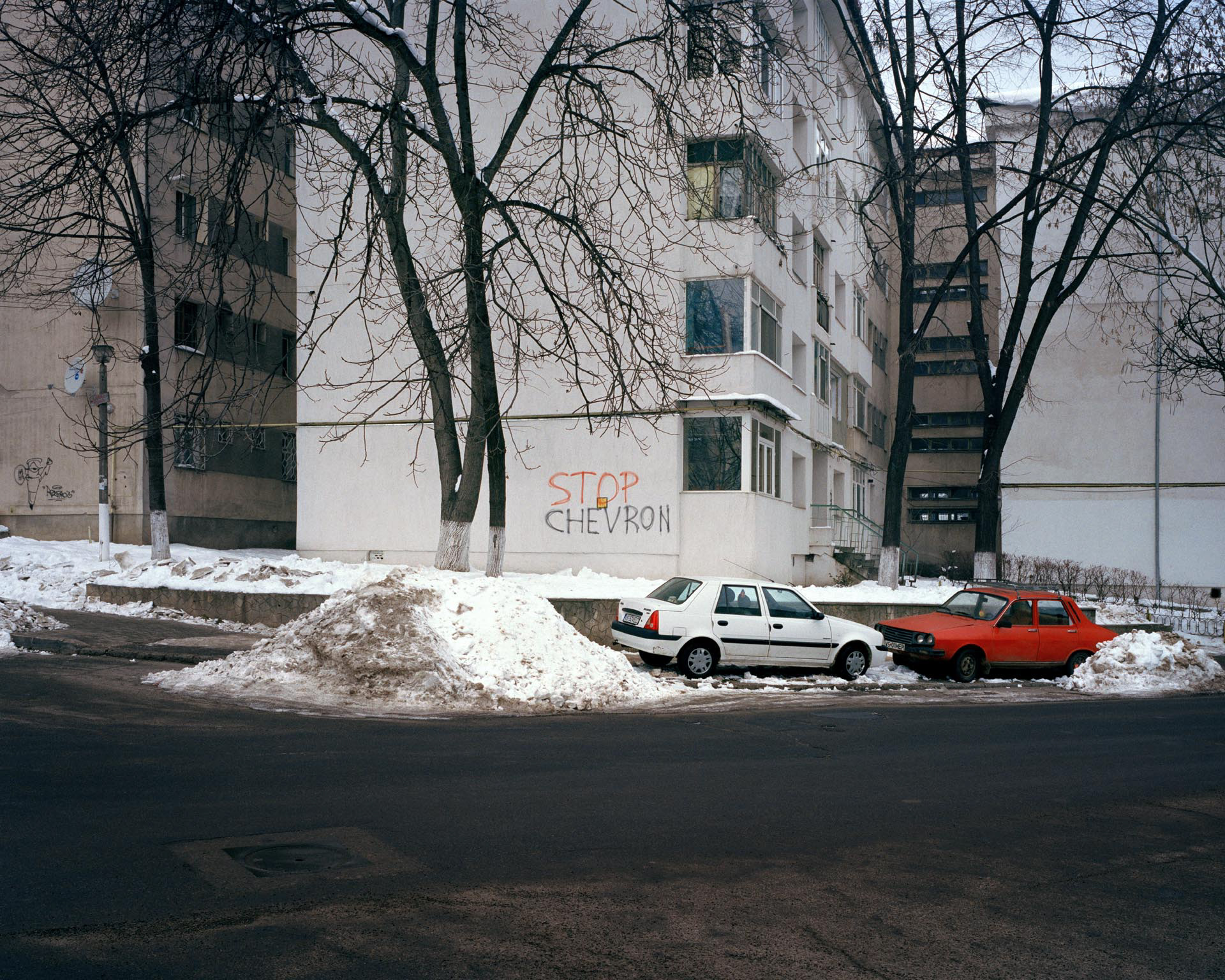
Vaslui, Romania. Anti-fracking graffiti in the center of Vaslui, the county seat of one of the poorest and most rural area of Romania
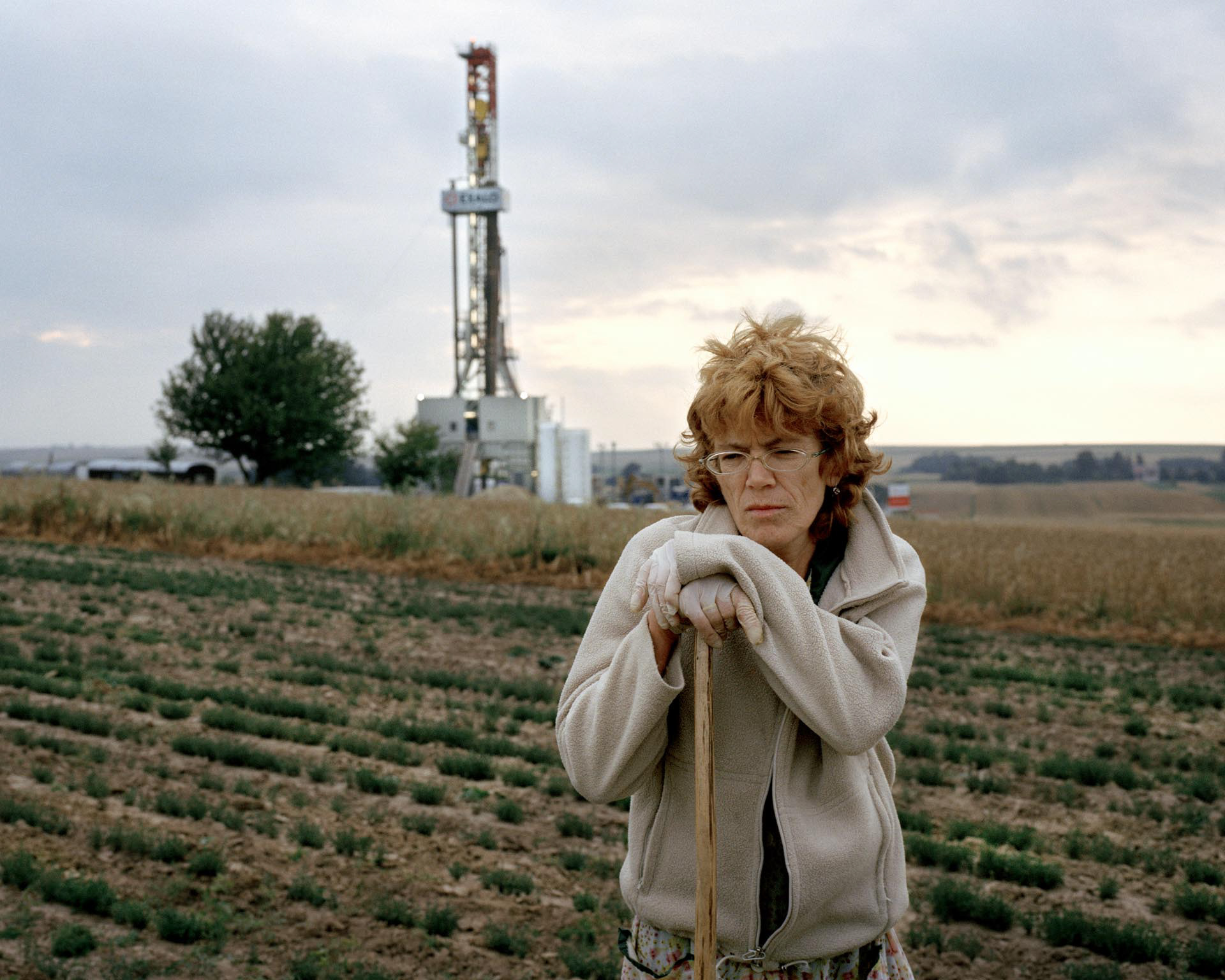
Dobryniòw, Poland. A farmer in Dobryniòw, eastern Poland. Land grabbing and land pollution are big concerns related to shale gas drillings. Companies often test the presence of underground gas on rural areas: local agriculture and environment are likely to be destroyed by any future drilling for commercial purposes
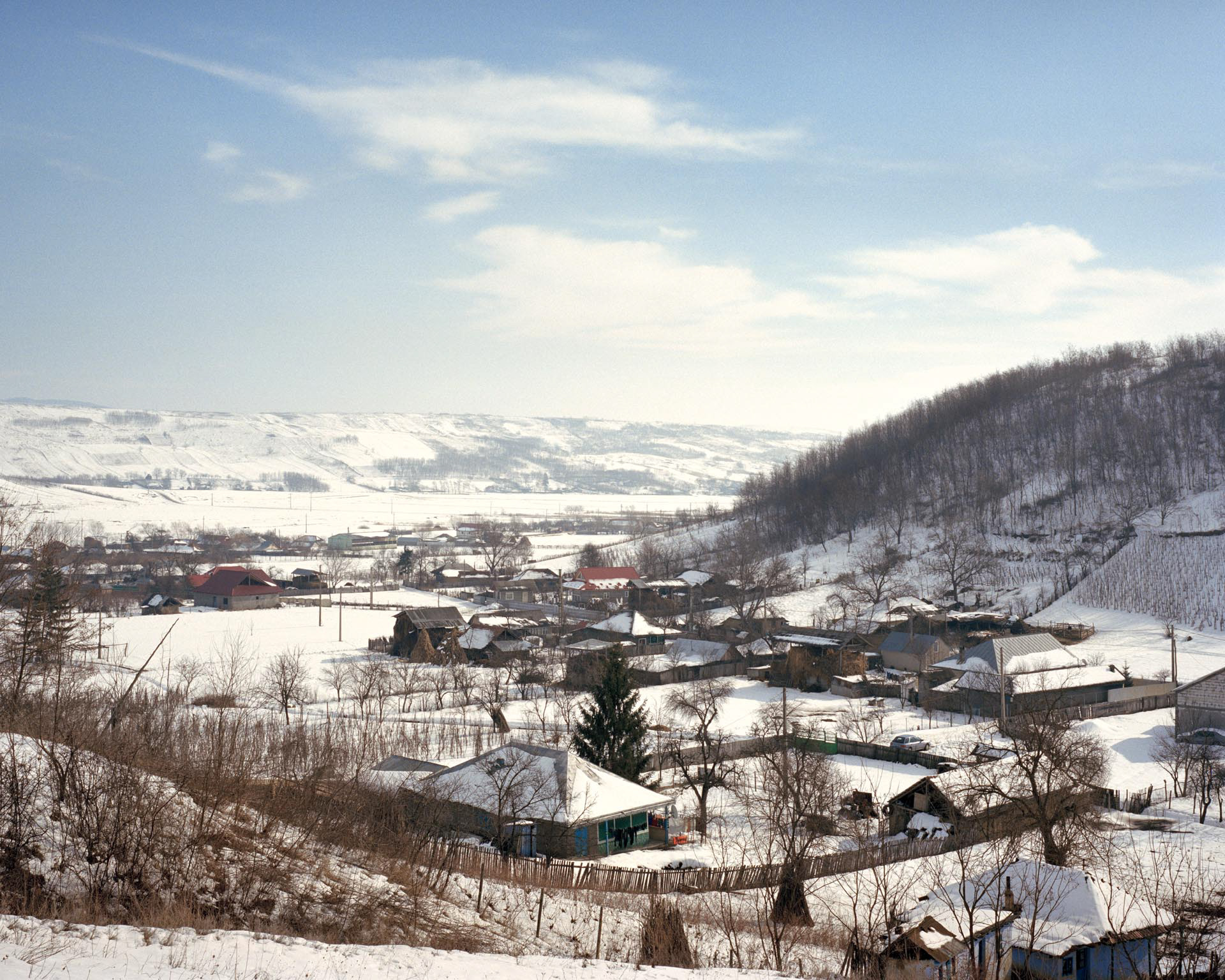
Pungesti, Romania. The first shale gas exploration site of Romania is located in Silistea, a village within the Pungesti commune
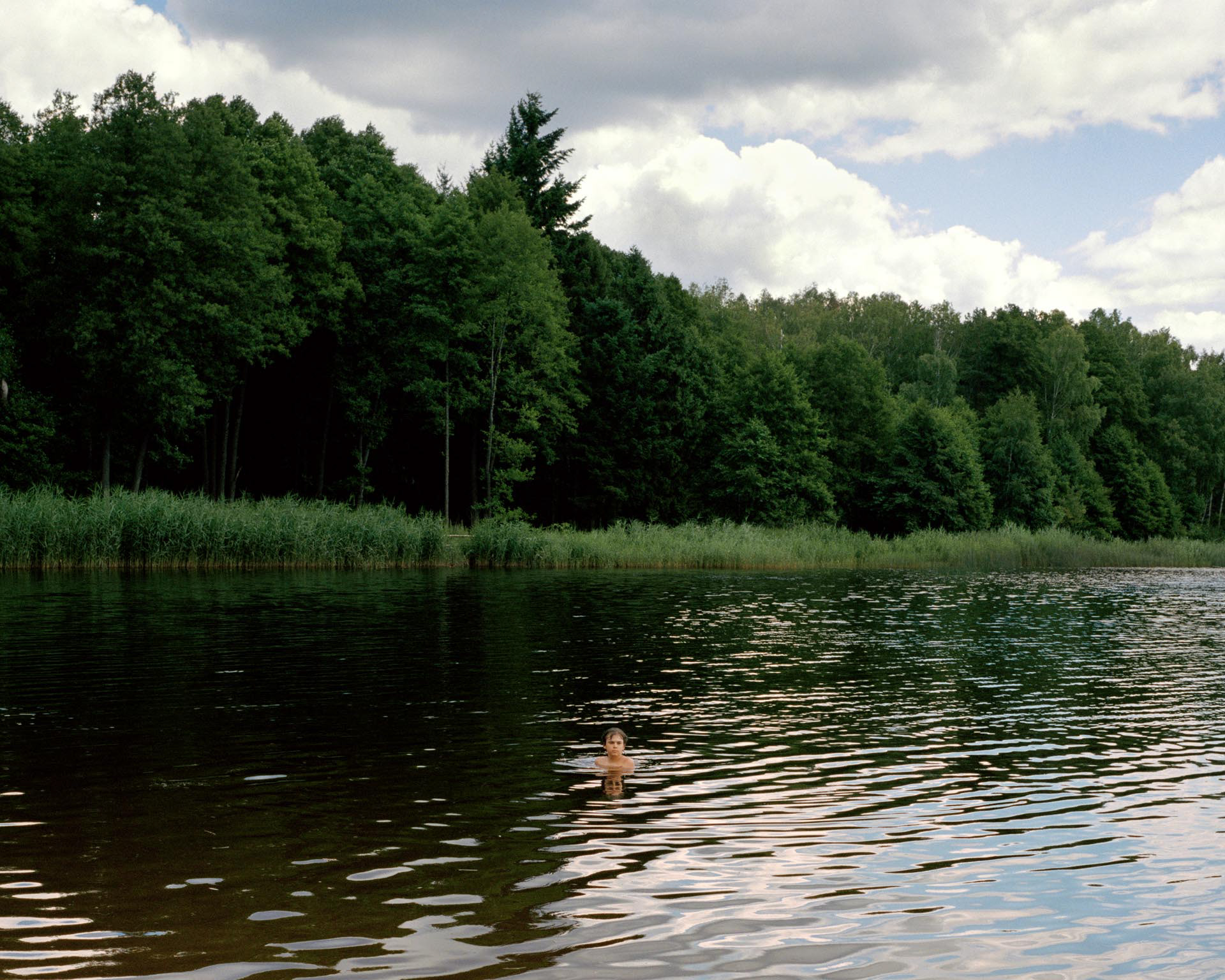
Zwierzyniec, Poland. Roztocze National Park is located within one of more than 100 areas that the Polish government has granted to companies interested in unconventional gas exploration. Fracking process requires a huge quantity of water: for this reason, lots of drilling sites rise up in the nearby of big water reserves. If shale gas production started in this region, the environmental balance of the park would be surely lost
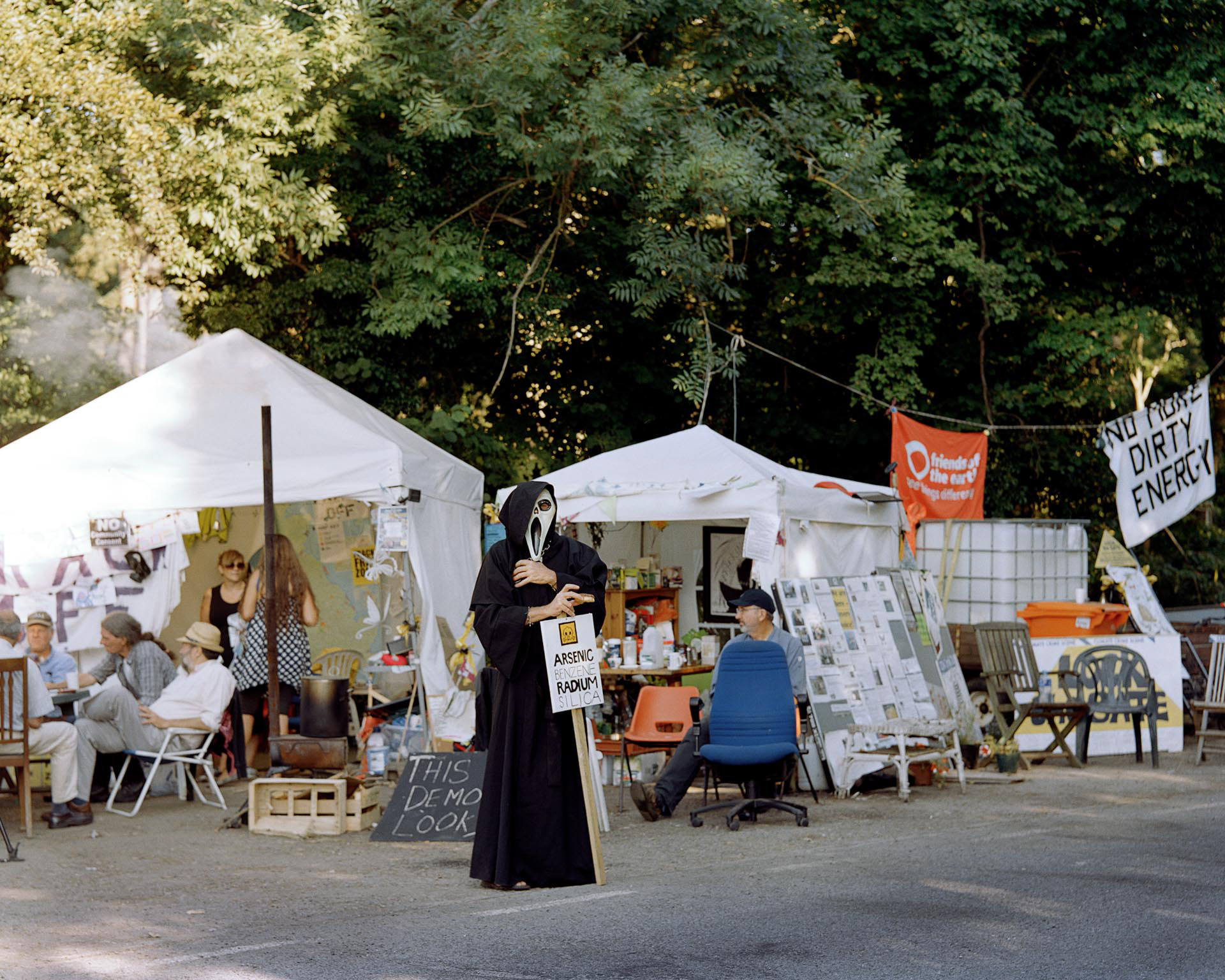
Balcombe, United Kingdom. A protester welcomes the cars crossing the community camp near Balcombe, West Sussex
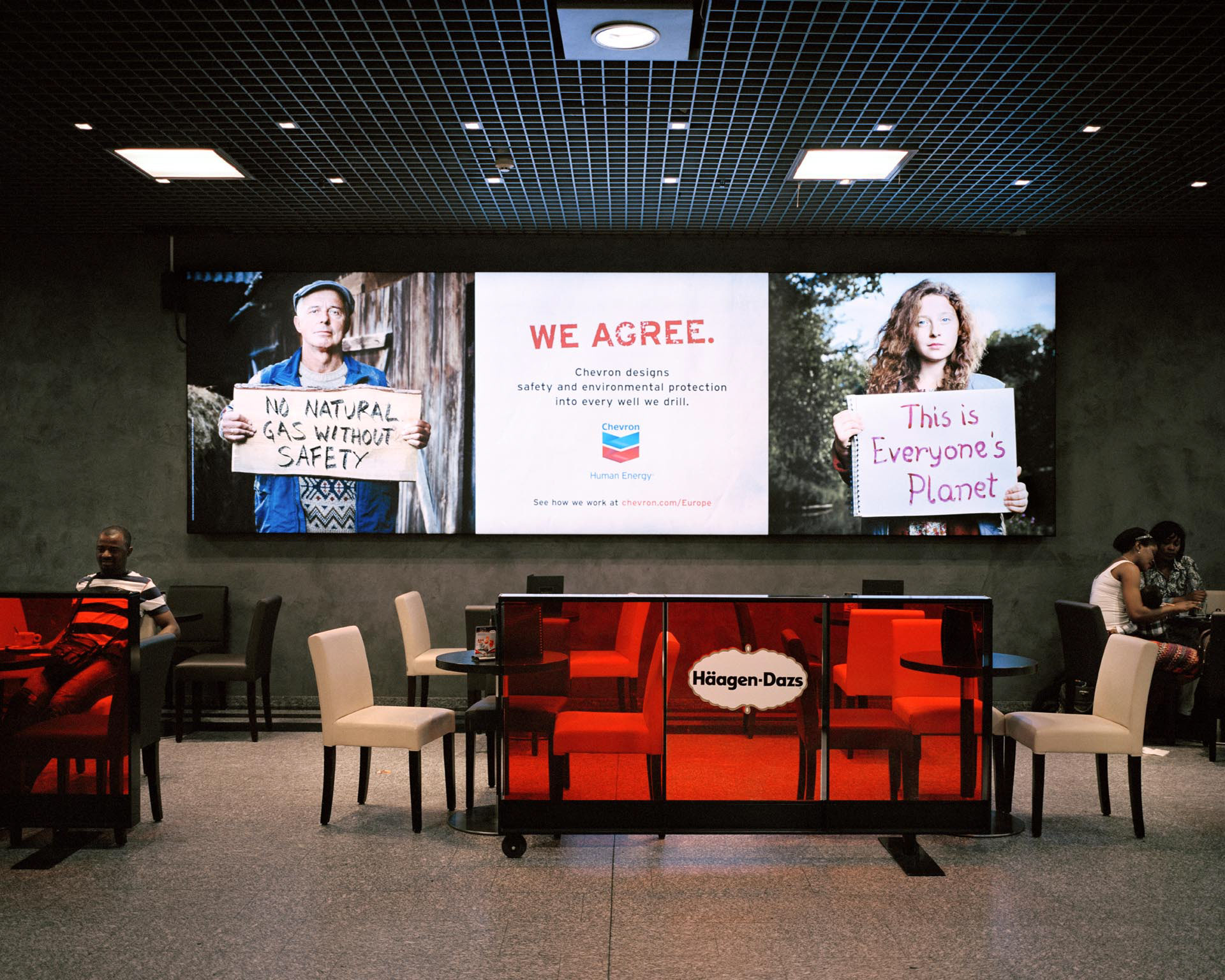
Bruxelles, Belgium. A billboard by the American Chevron corporation inside a railway station in Bruxelles. During the last June, the Belgian capital has hosted the G8 summit about clean energy and climate change
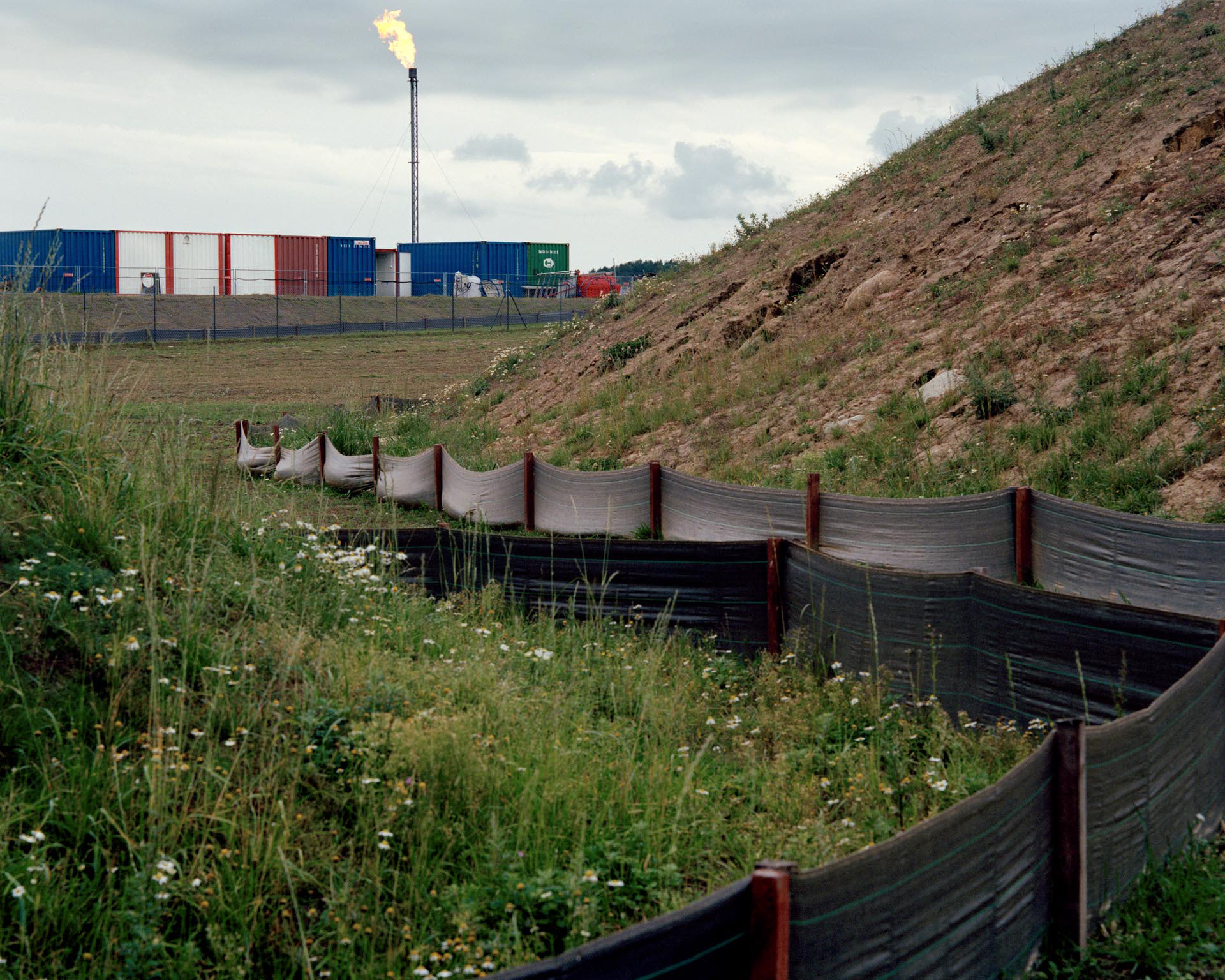
Lublewo, Poland. A gas flare is a combustion device used in oil or gas production sites having wells and rigs. This operation consists in burning off the overproduced gas, which would be too much expensive to stock and transport. Gas flaring has serious environmental consequences and it is a significant source of carbon dioxide (as well as several other carcinogenic substances) emissions
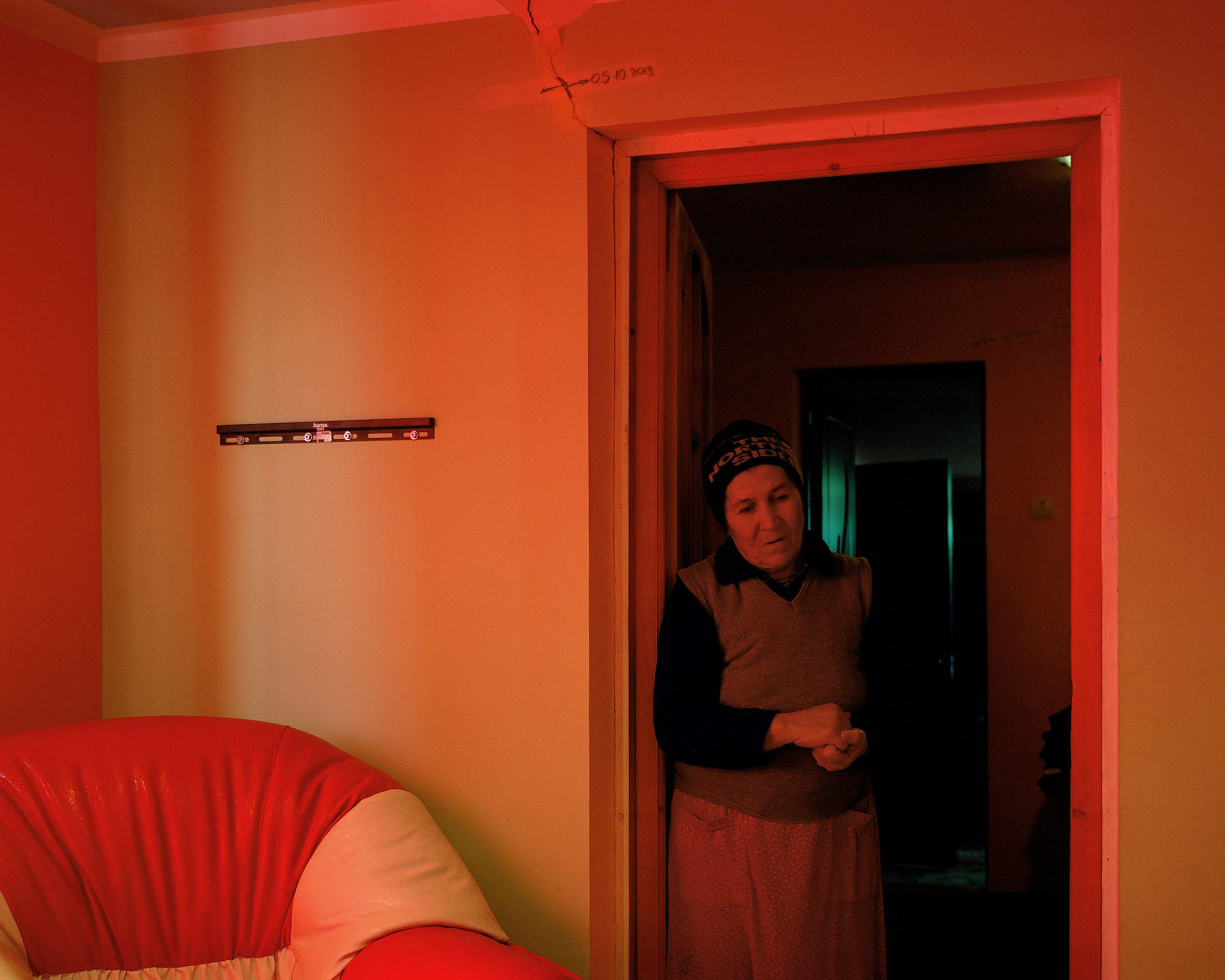
Izvoarele, Romania. Inside a damaged house in Izvoarele, Galati county. In October 2013, the village of Izvoarele was the epicenter of an intense seismic activity. People believe that the cause of the earthquakes is to be found in the experiments of hydraulic fracturing that were supposed to be conducted in the nearby town of Schela. These assumptions have never been confirmed
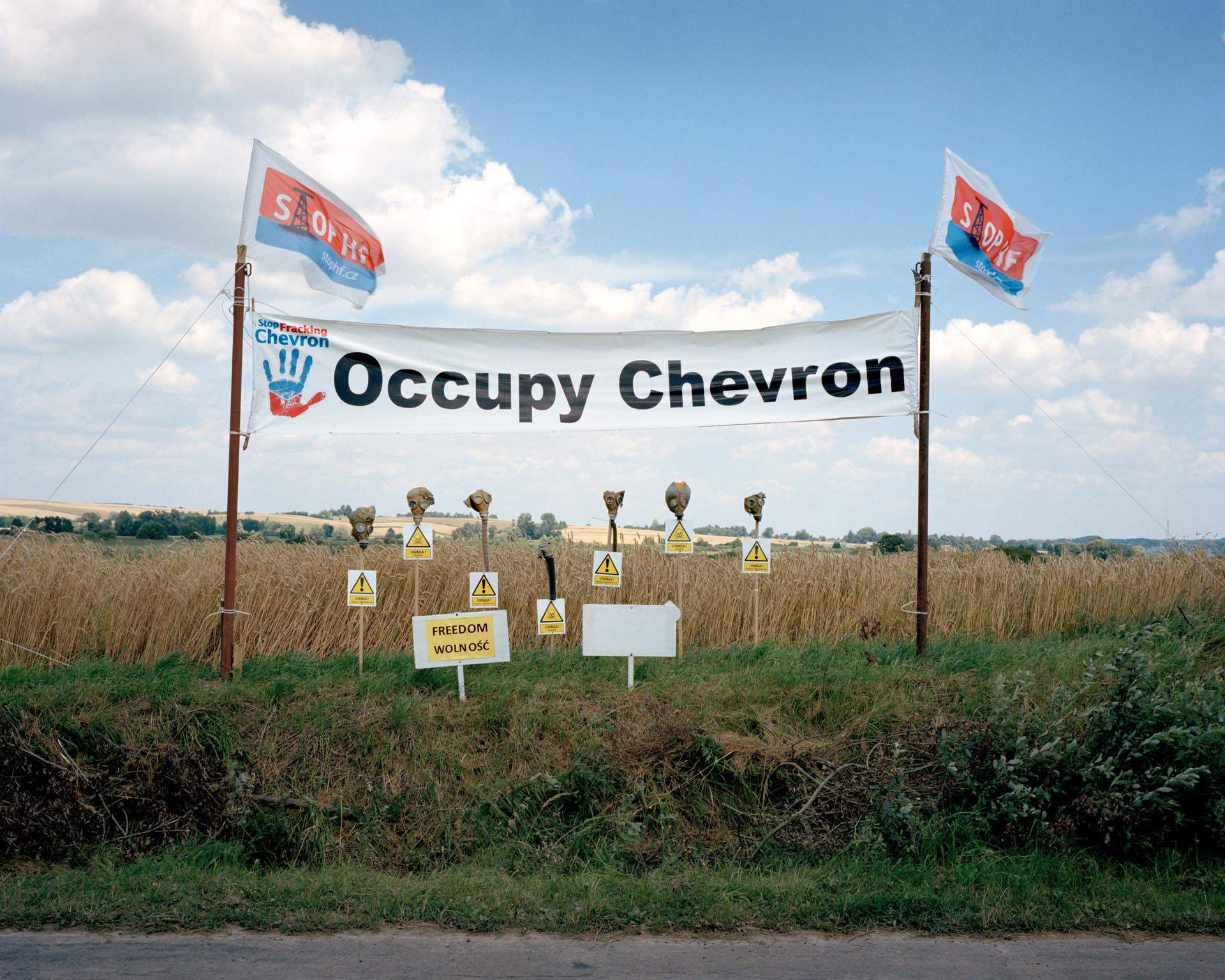
Zurawlow, Poland. When in June 2013 the farmers of Zurawlow, a small village in south-eastern Poland, discovered that Chevron was about to rise up a drilling site for shale gas extractions on their lands, they gave birth to the Occupy Chevron movement. After 400 days of protests and permanent occupation of their fields, the villagers managed to block Chevron's intention and to stop the operations
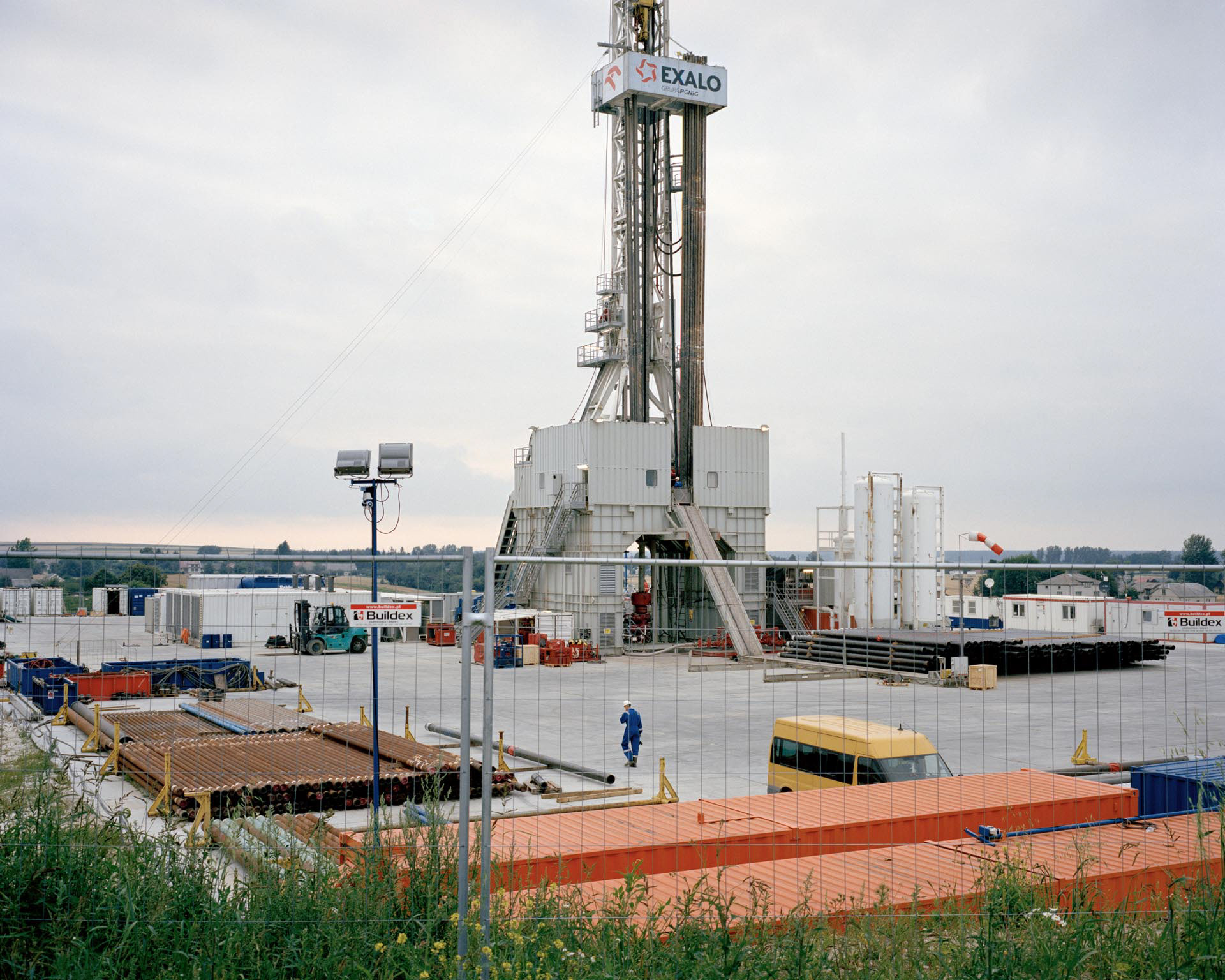
Dobryniòw, Poland. Workers inside the Dobryniow fracking site, in the nearby of Lublin
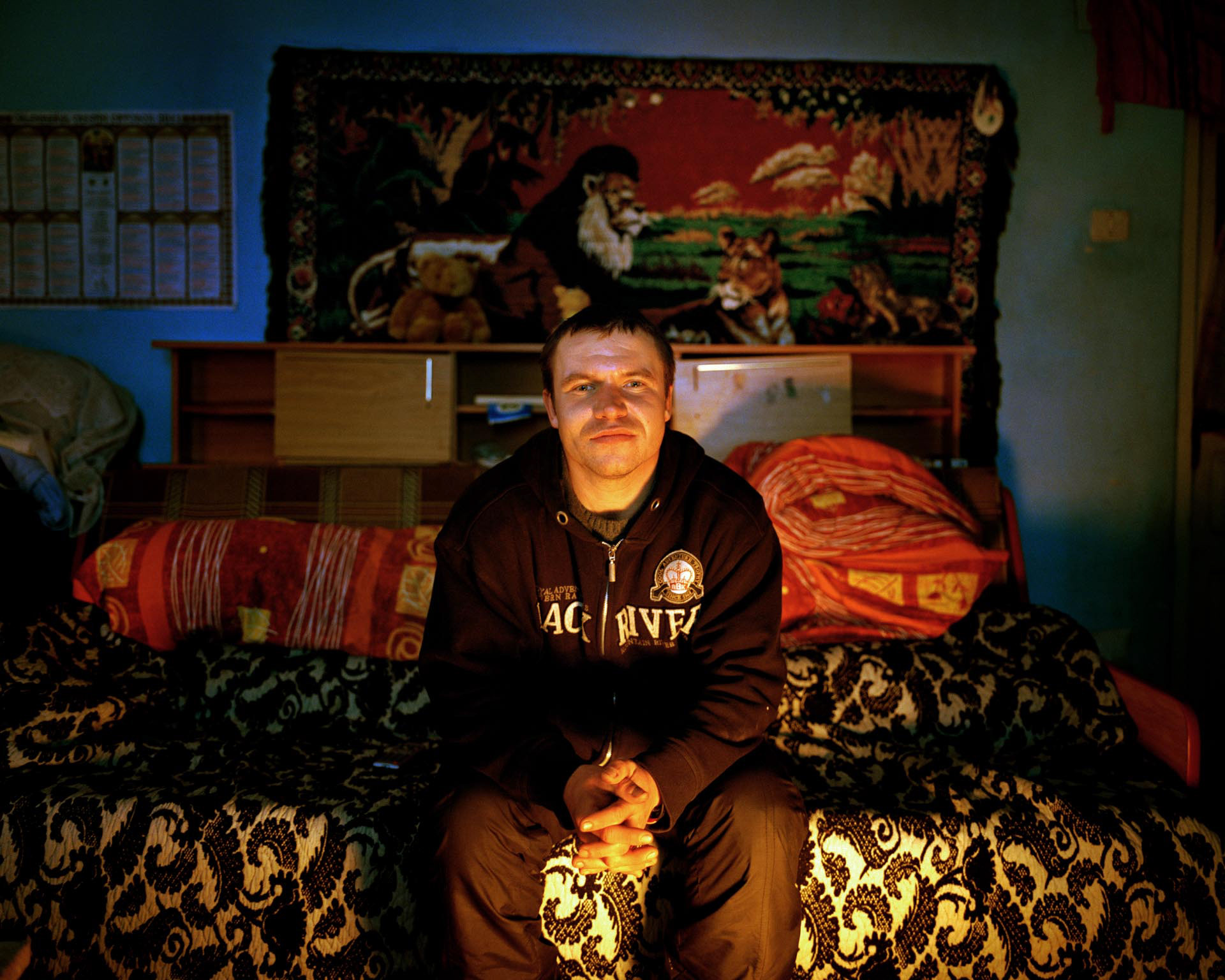
Silistea, Romania. Alexandru used to share a small house with a group of anti-fracking protesters next to the Chevron drilling platform in Pungesti. The house became the Resistance of Pungesti headquarters. In February 2015 Chevron officially quit Romania due to “poor exploration results and prolonged protests by environmentalists”
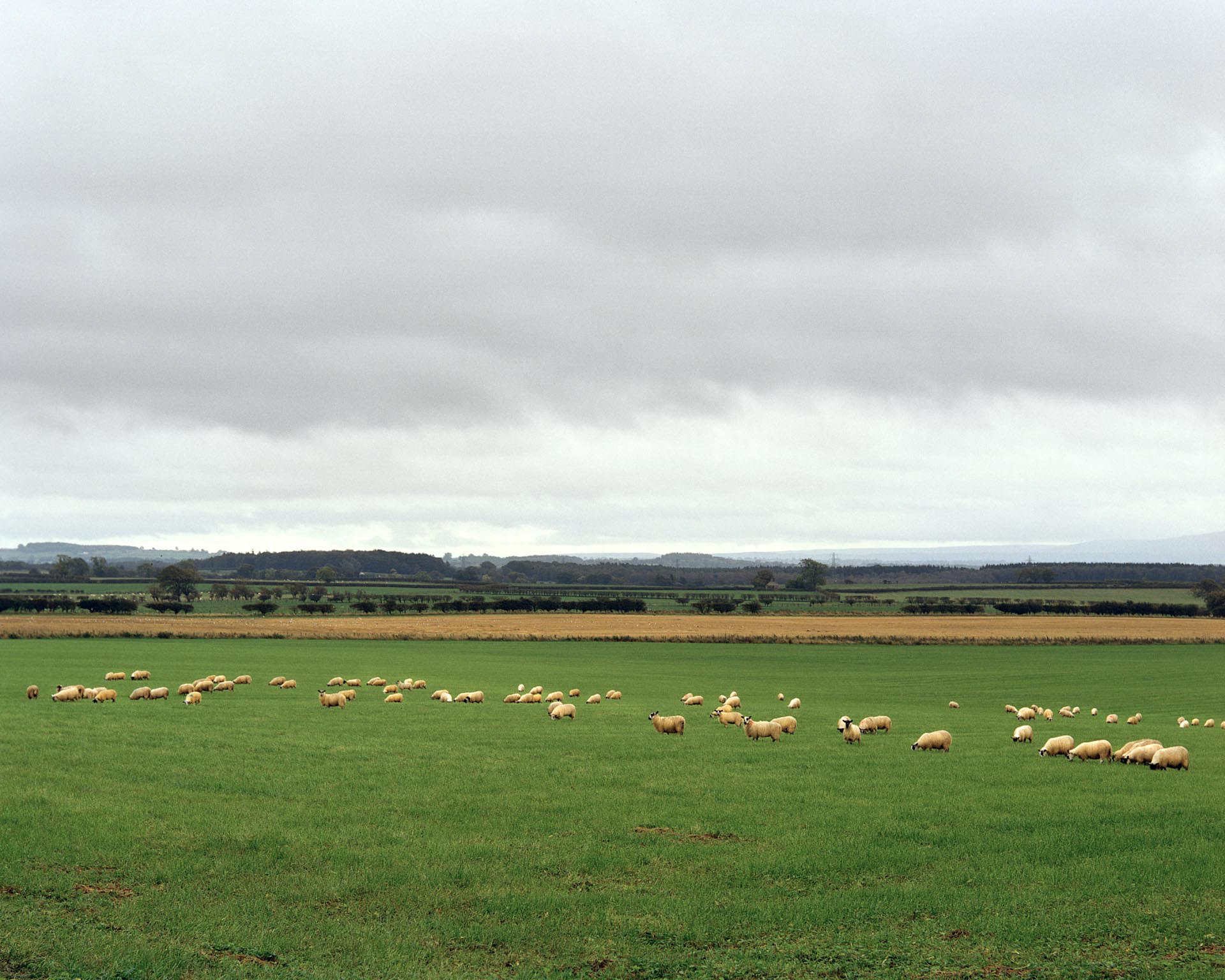
Cumbria, United Kingdom. These fields on the border between Scotland and England are part of one of the many concessions granted by the British government for preliminary drilling tests. British shale gas exploration plants are supposed to be erected on areas that are now often used for farming and herding

Pungesti, Romania. The entrance to the Chevron shale gas extraction site in Pungesti, eastern Romania. On the 7th of December 2013, during some violent protests against fracking, the fences of the platform were totally destroyed by the population. Since that day, the Romanian government led by Prime Minister Victor Ponta, declared the area a special security zone. This decision entails a constant presence of the Gendarmerie on site and restricted access to the village
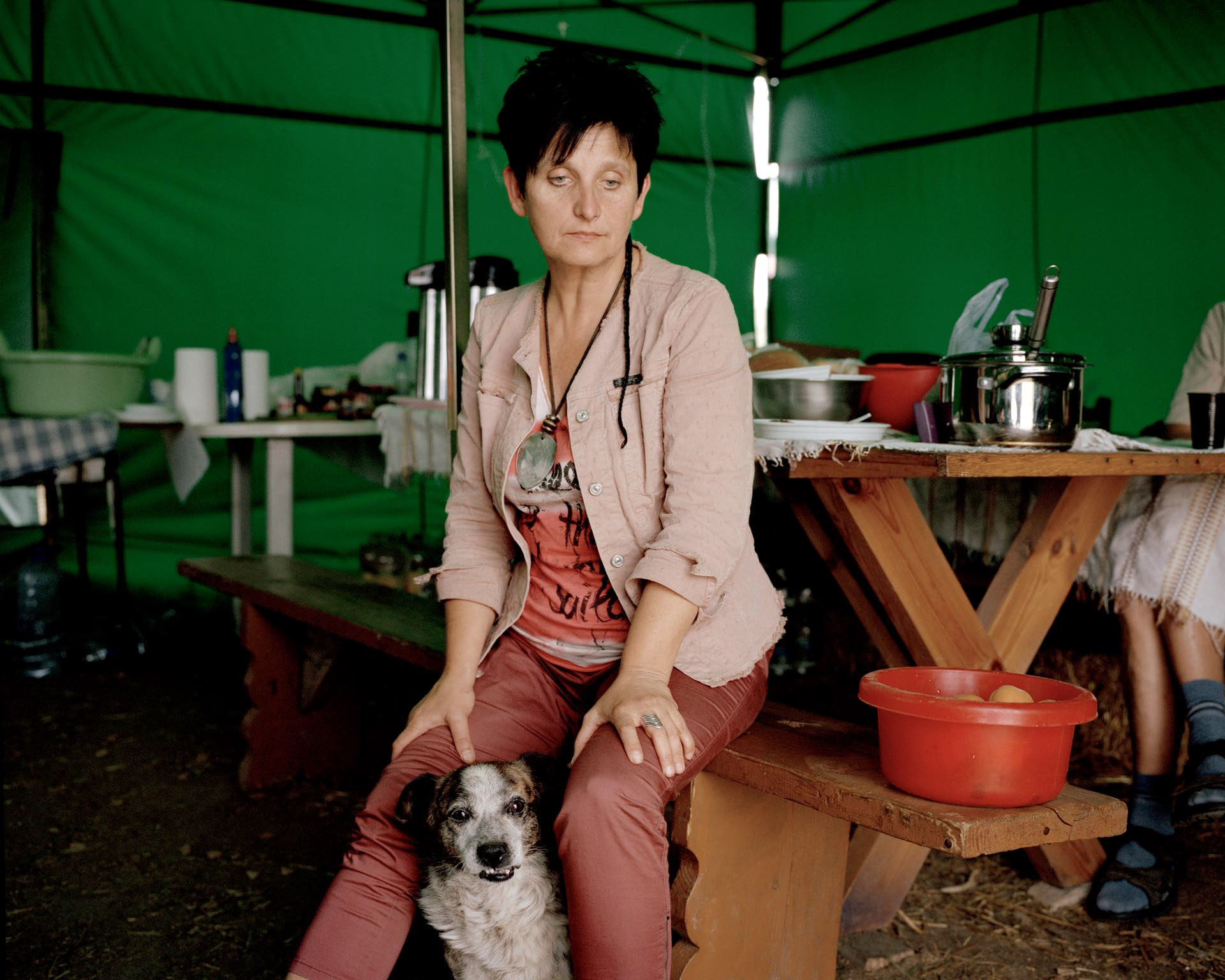
Zurawlow, Poland. Inside the Occupy Chevron tent. Barbara Siegienczuk was one of the leading protester of the Zurawlow movement
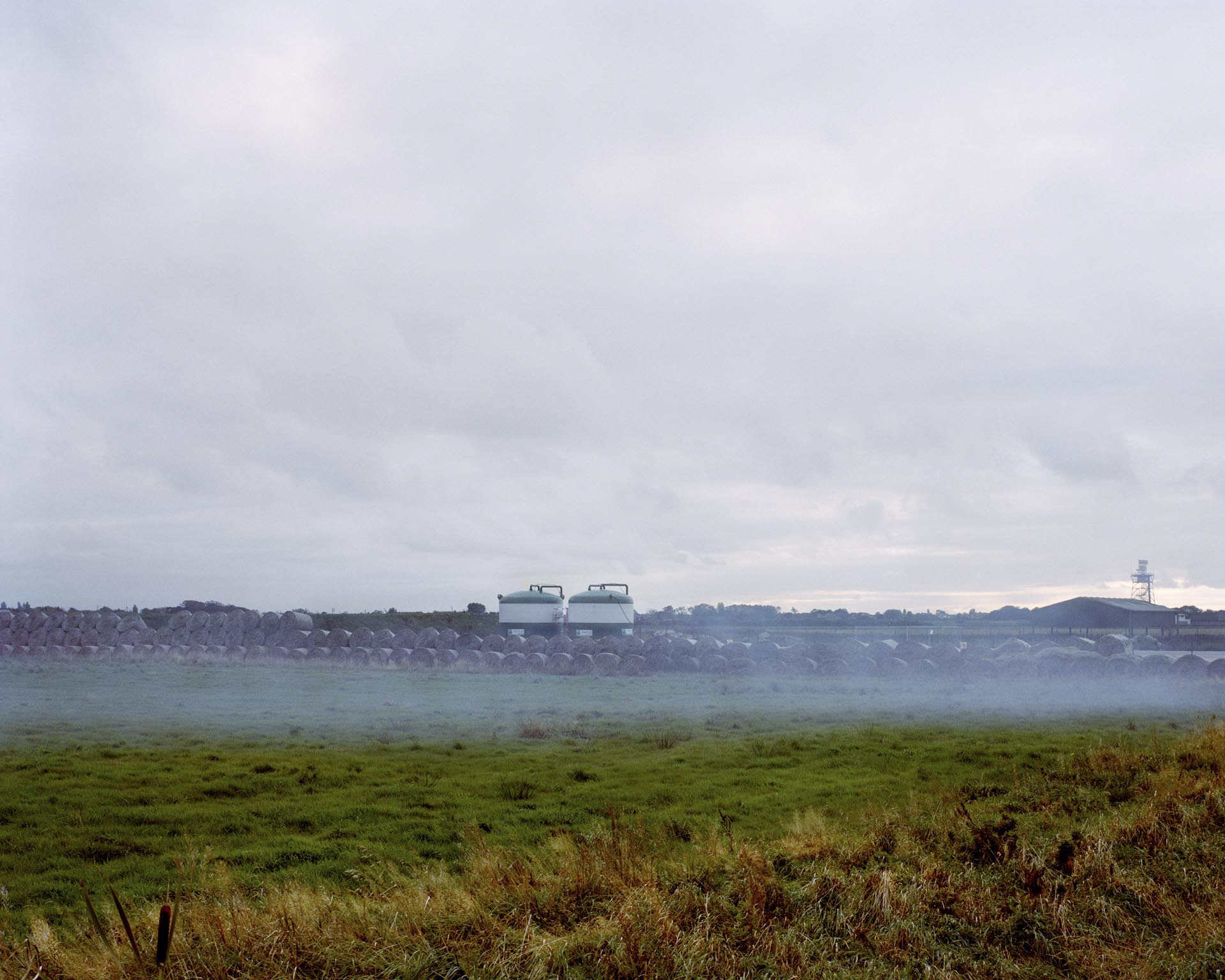
Lancashire, United Kingdom. Gas storage site near Blackpool. In 2011 the shale gas extractions were suspended in the UK after a series of small earthquakes in Blackpool, Lancashire. The responsibility of the micro-earthquakes was given to fracking, the process that was used to explore unconventional gas basins in the countryside around the city. The drilling company, Cuadrilla, commissioned an investigation into the seismic activity that confirmed this cause, too. Its drilling activity resumed anyway in December 2012
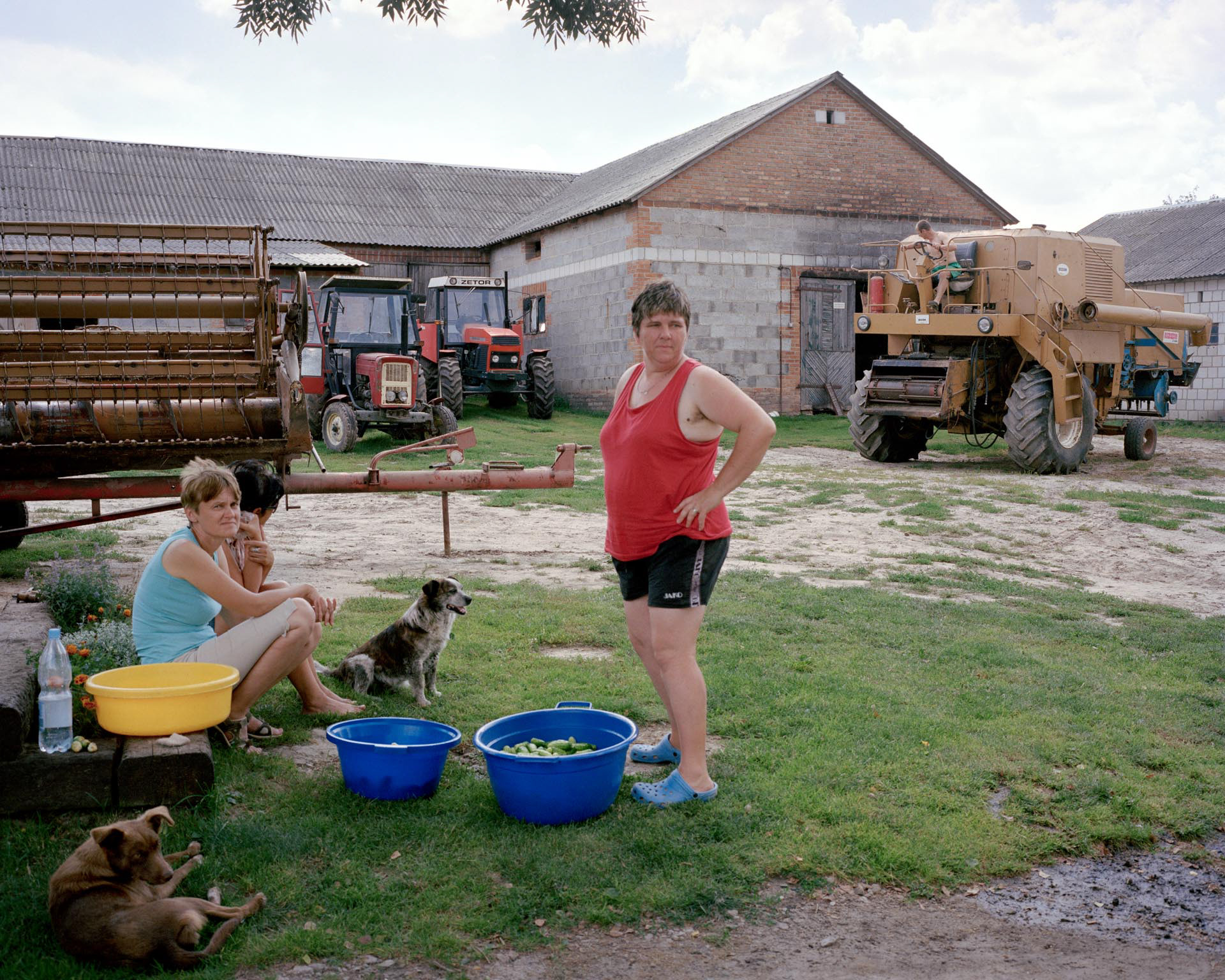
Grabowiec, Poland. The inner courtyard of Emil Jabłonski's house. Emil is the sołtys, i.e. the village leader, of the agricultural district of Zurawlow. Emil was among the first farmers to take action against the shale gas exploration plans on the fields of Zurawlow. The whole Jabłonski family is involved in sugar beet, maize and wheat cultivations and cattle farming
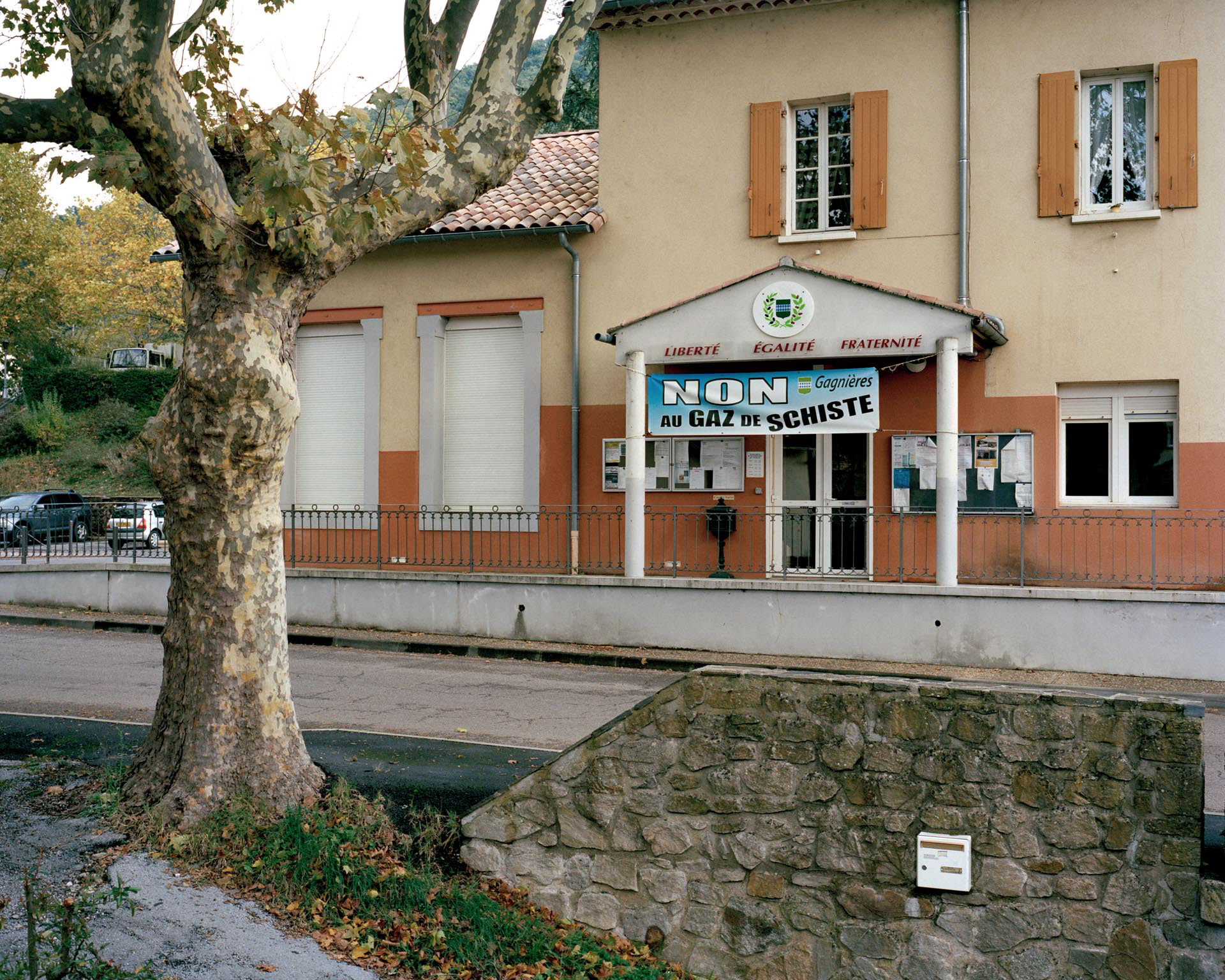
Cévennes, France. In July 2011 France was the first European country to pass a law (“Loi Jacob”) banning the technique of hydraulic fracturing for extracting natural gas and oil. The big popular demonstration of Villeneuve de Berg on February 2011 was an important turning point in the cancellation of the first exploration permits within the Cévennes National Park area and towards the national moratorium on hydraulic fracturing
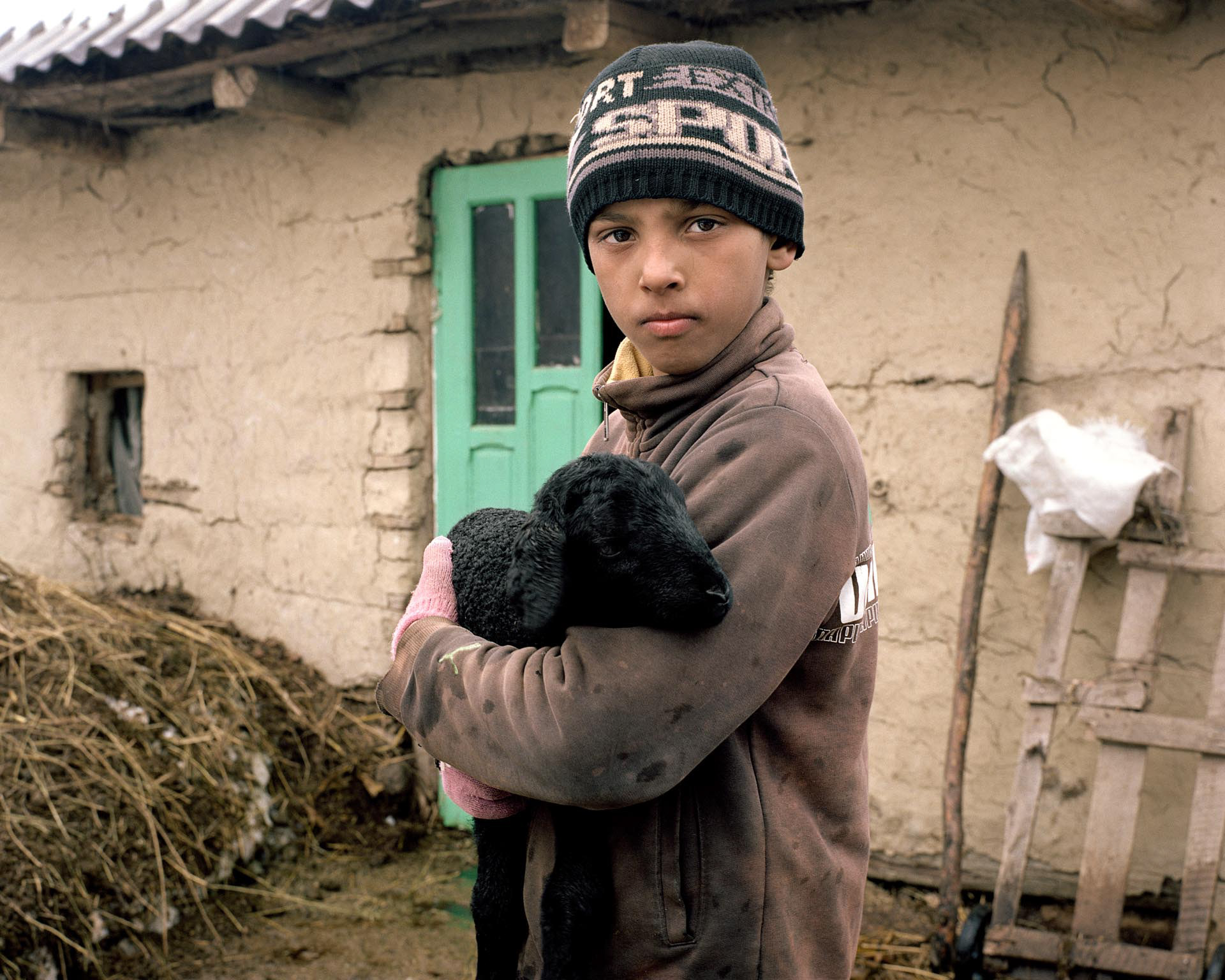
Paltinis, Romania. A child holds a lamb in front of his house. Paltinis, a small village in the Vaslui region, is mainly populated by Gypsies, entirely devoted to agriculture and livestock farming. In order to produce shale gas, Chevron wants to install its second Romanian fracking well here in Paltinis
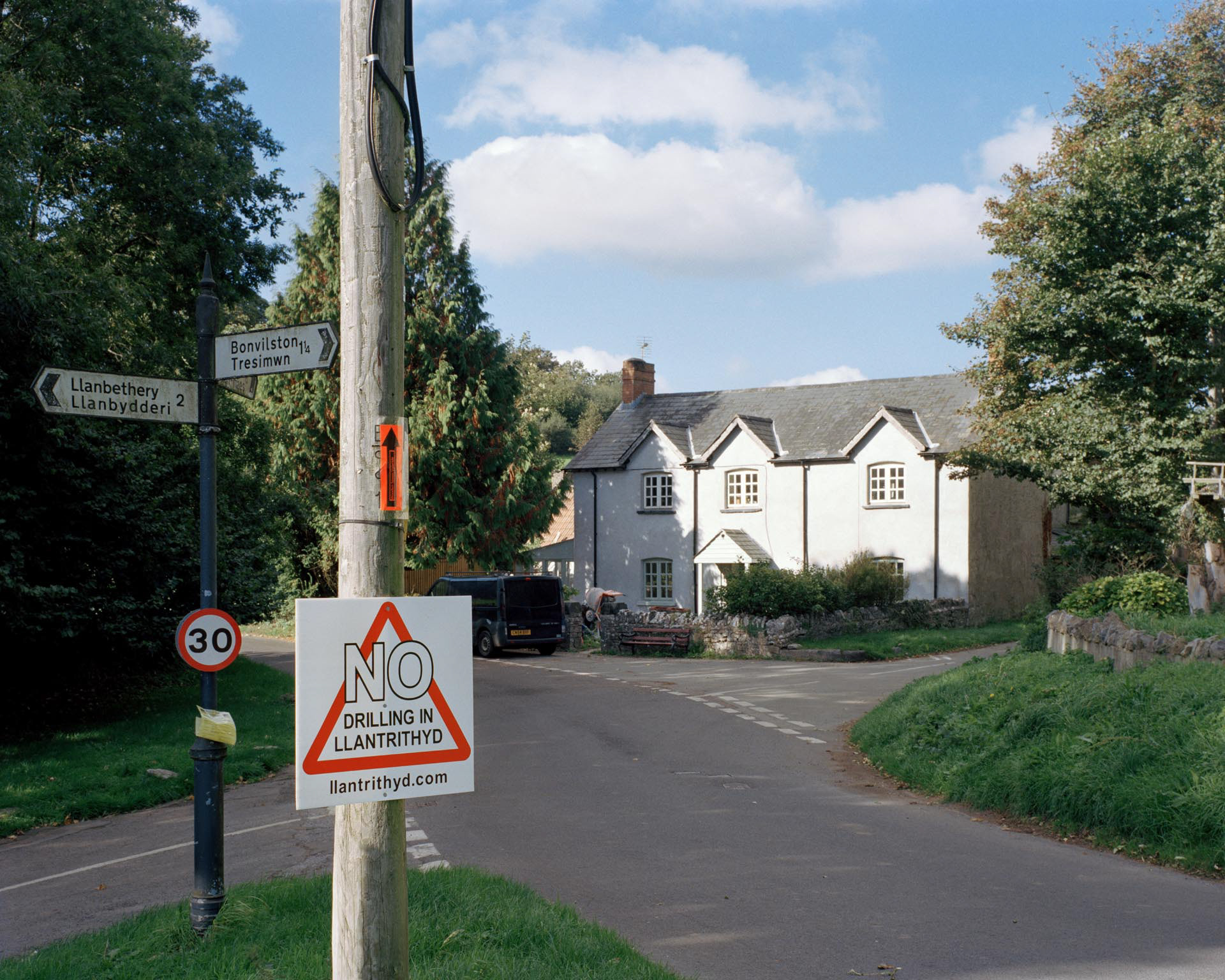
Llantrithyd, United Kingdom. In the United Kingdom, drillings and fracking licences have already impacted the real estate market, decreasing home and property value. Llantrithyd is a tiny Welsh village surrounded by nature. The area has been identified by Coastal Oil and Gas as a suitable site for unconventional gas explorations: the community is strongly opposing this proposal
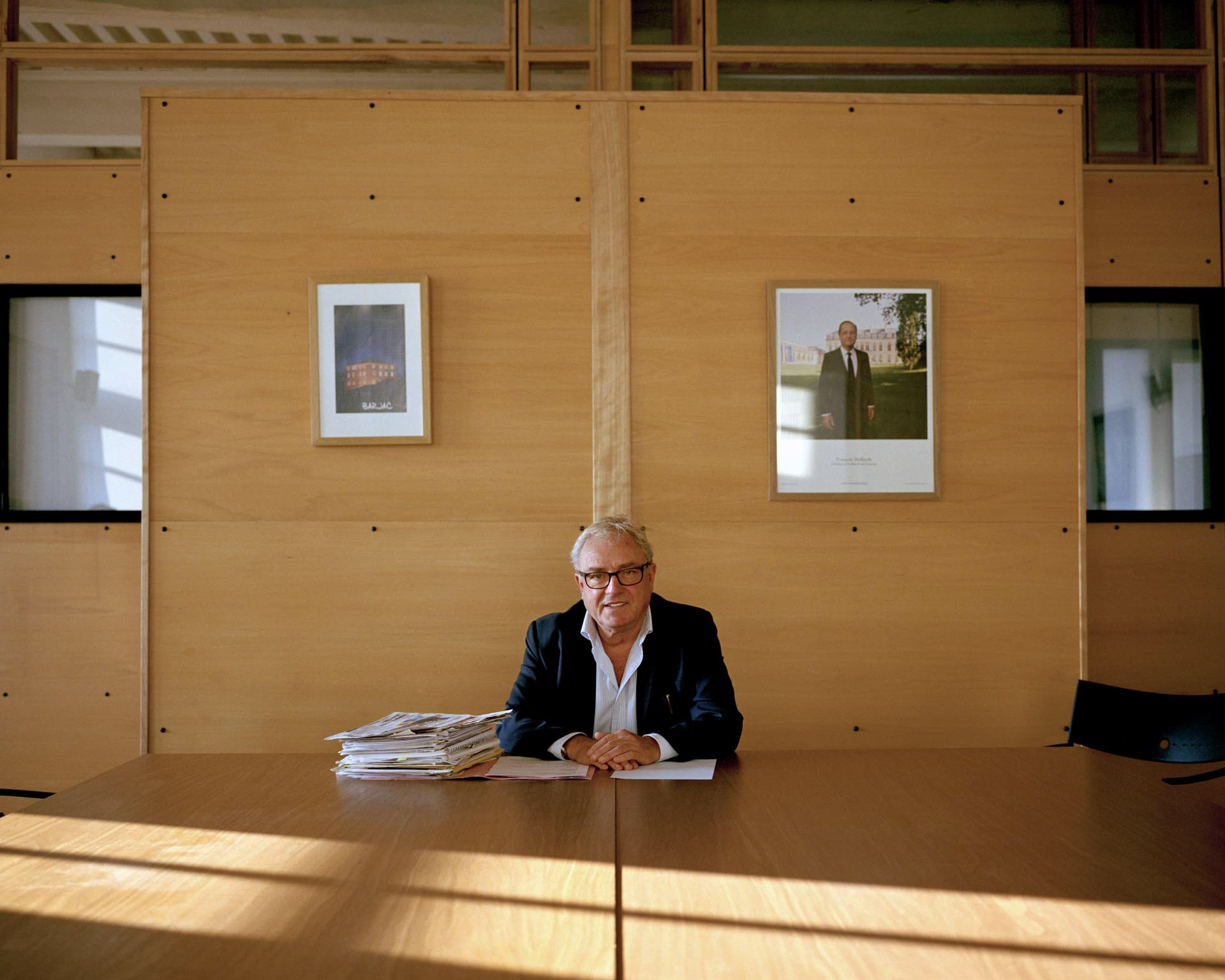
Barjac, France. Edouard Chaulet is the anti-fracking mayor of Barjac, a commune in the Gard department. The village lies within one of the three permits that have been cancelled by former President of France Nicolas Sarkozy in 2011
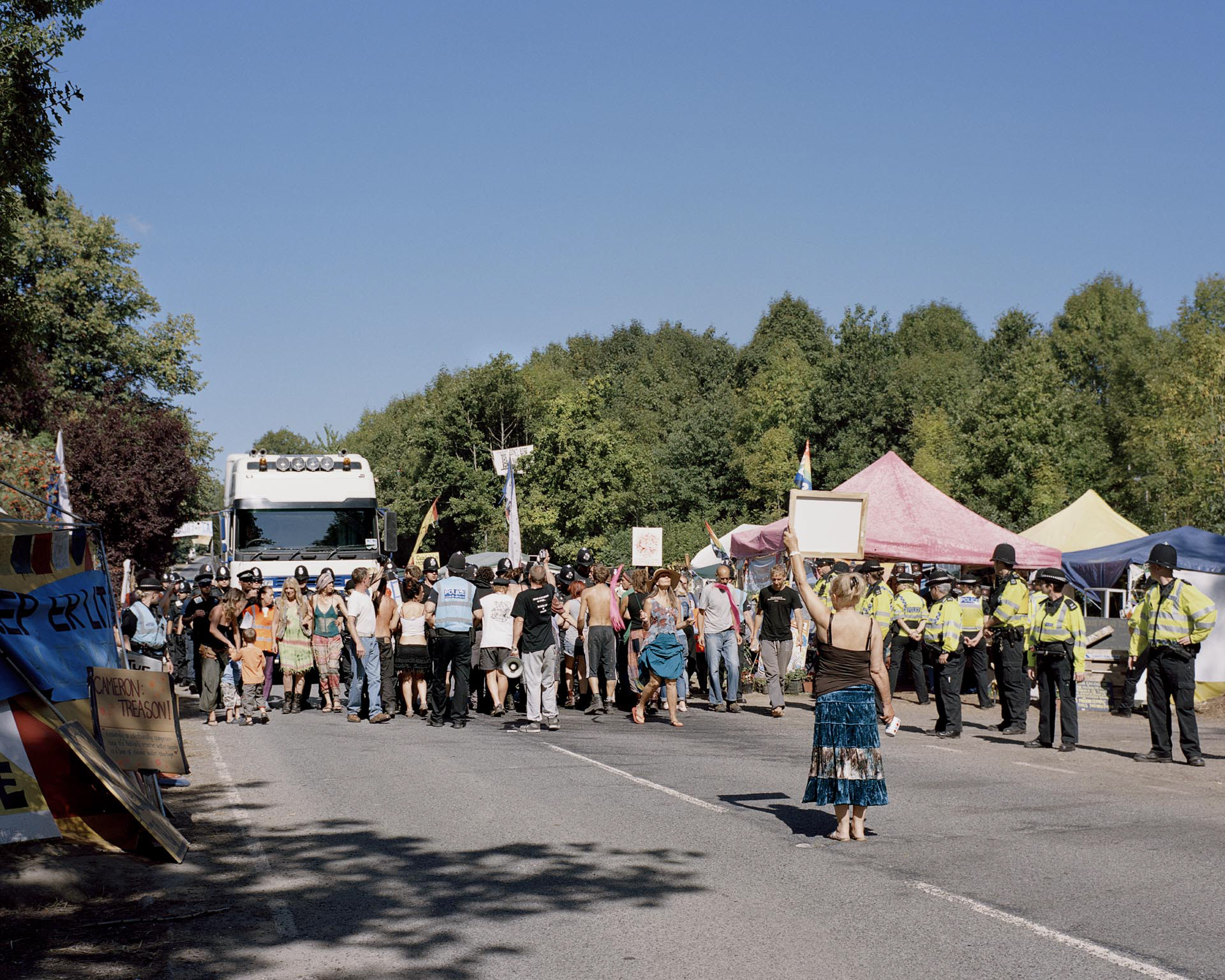
Balcombe, United Kingdom. Protesters
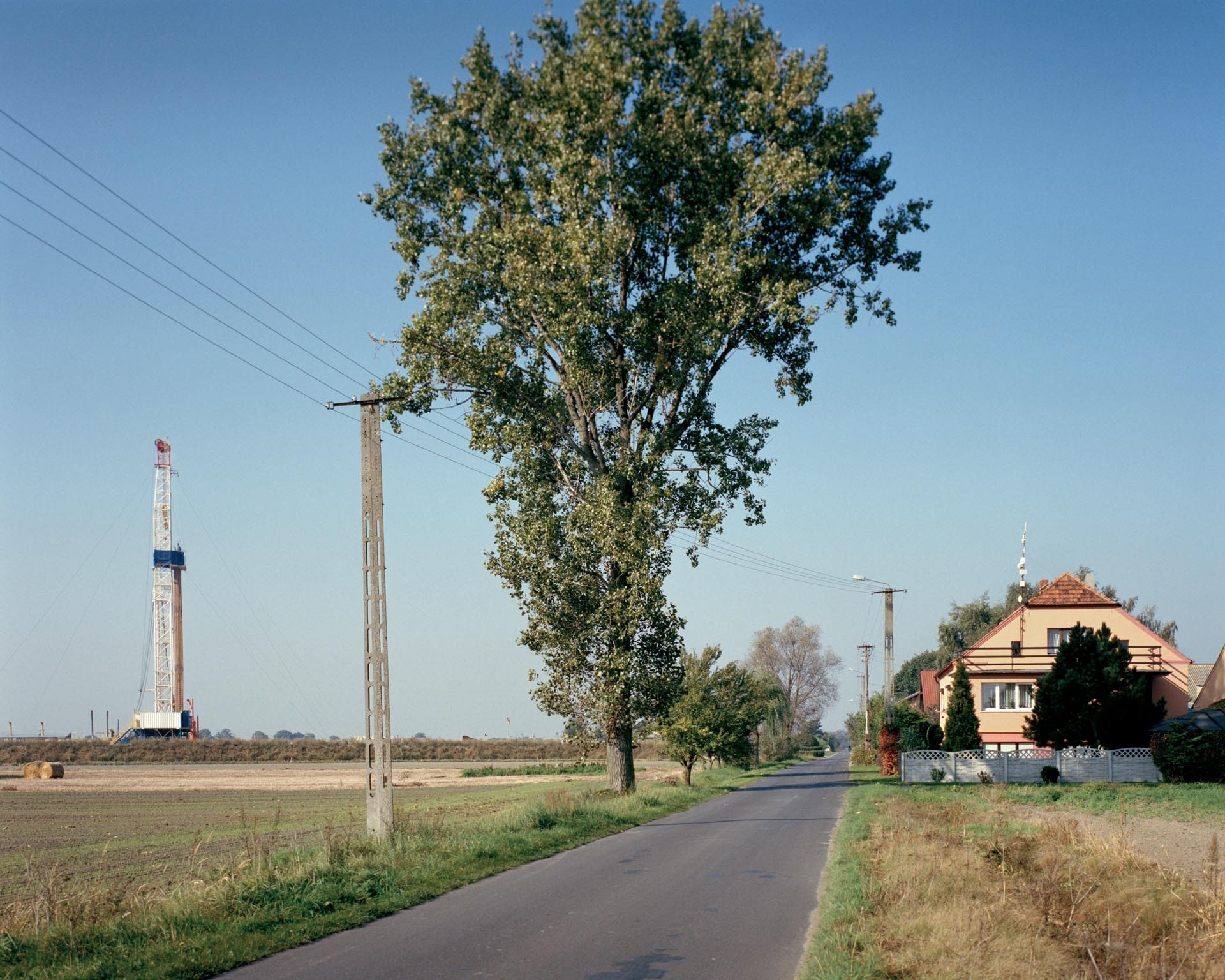
Karmin, Poland. Fracking operations produce loud noise and need a stable enlightenment, even during the night. When drilling sites and houses are at a short distance, family life is going to be significantly changed
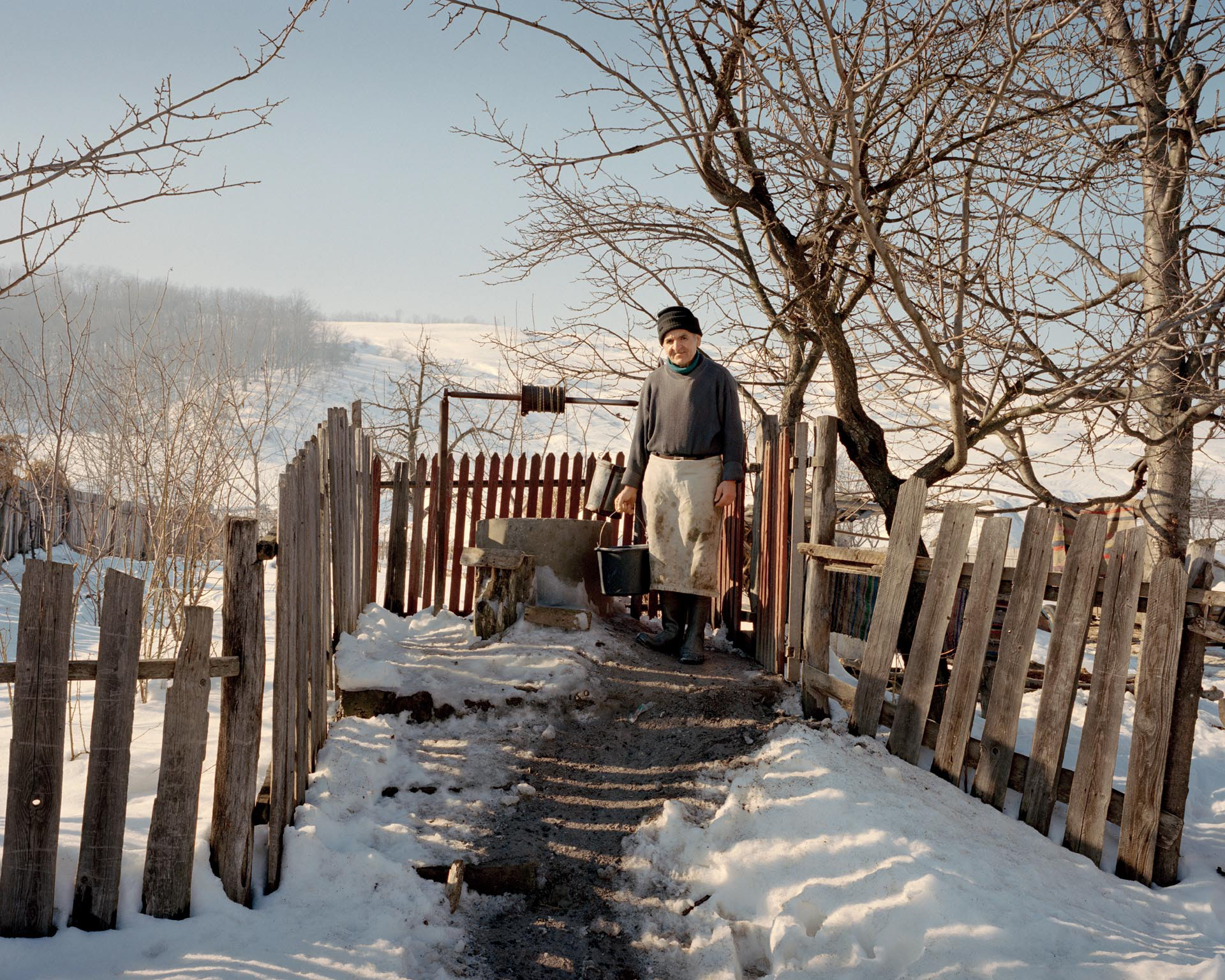
Paltinis, Romania. Some houses in eastern Romania still don't have running water. Aquifer and groundwater pollution would be major issues in the gipsy village of Paltinis, where Chevron had planned to open its second fracking site in the country.
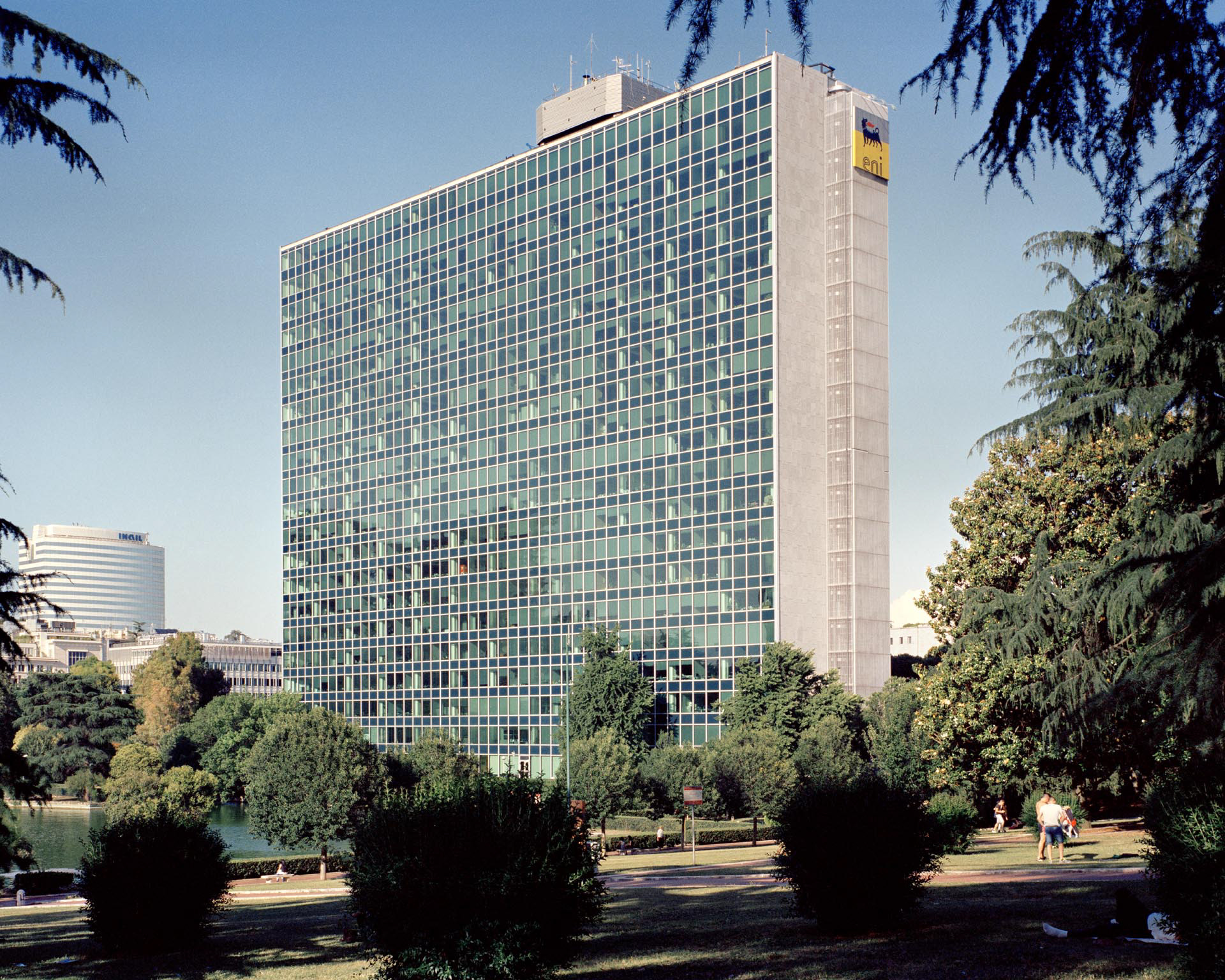
Rome, Italy. Head office of ENI. In 2010 ENI oil company obtained three licenses for the shale gas exploitation in Poland. After less than four years, the company abandoned the project, due to the very complex extraction techniques and the regulatory plan imposed by Polish government
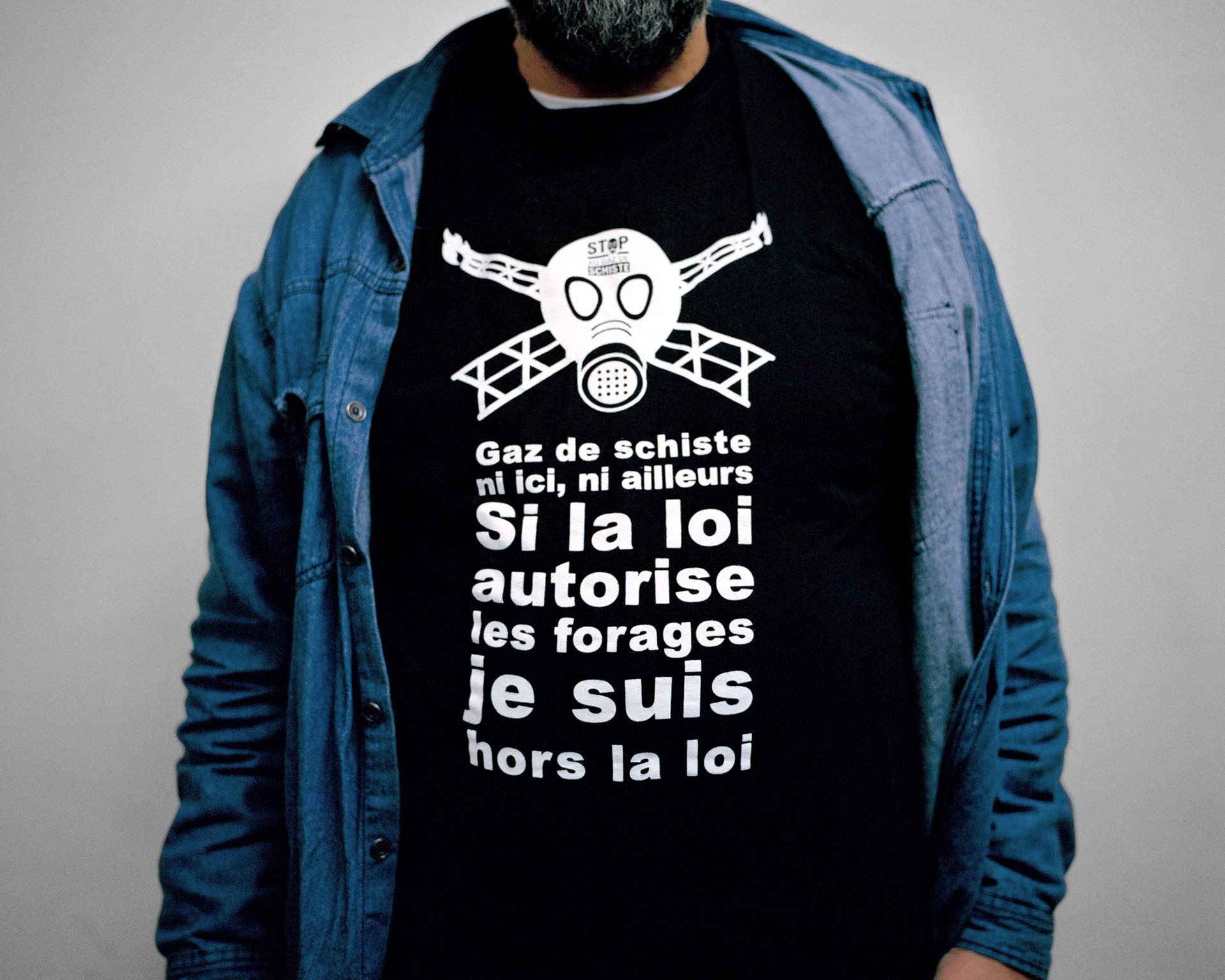
Villedieu, France. An activist of the Ardeche collective shows his t-shirt. The motto on it says “If the law authorizes drillings, I am an outlaw”
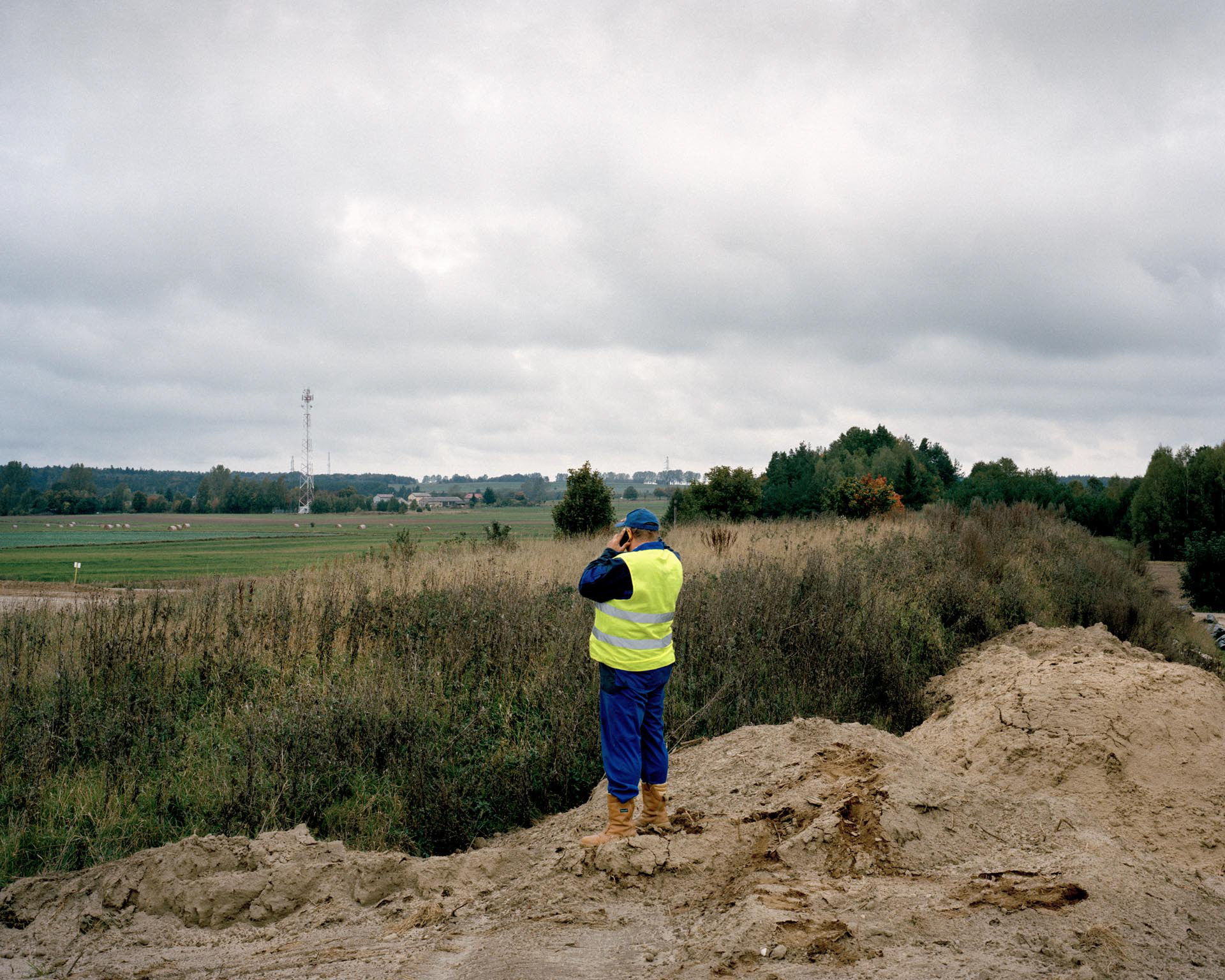
Lubocino, Poland. A PGNiG worker is verifying the progress of excavation in the fracking site of Lubocino, northern Poland
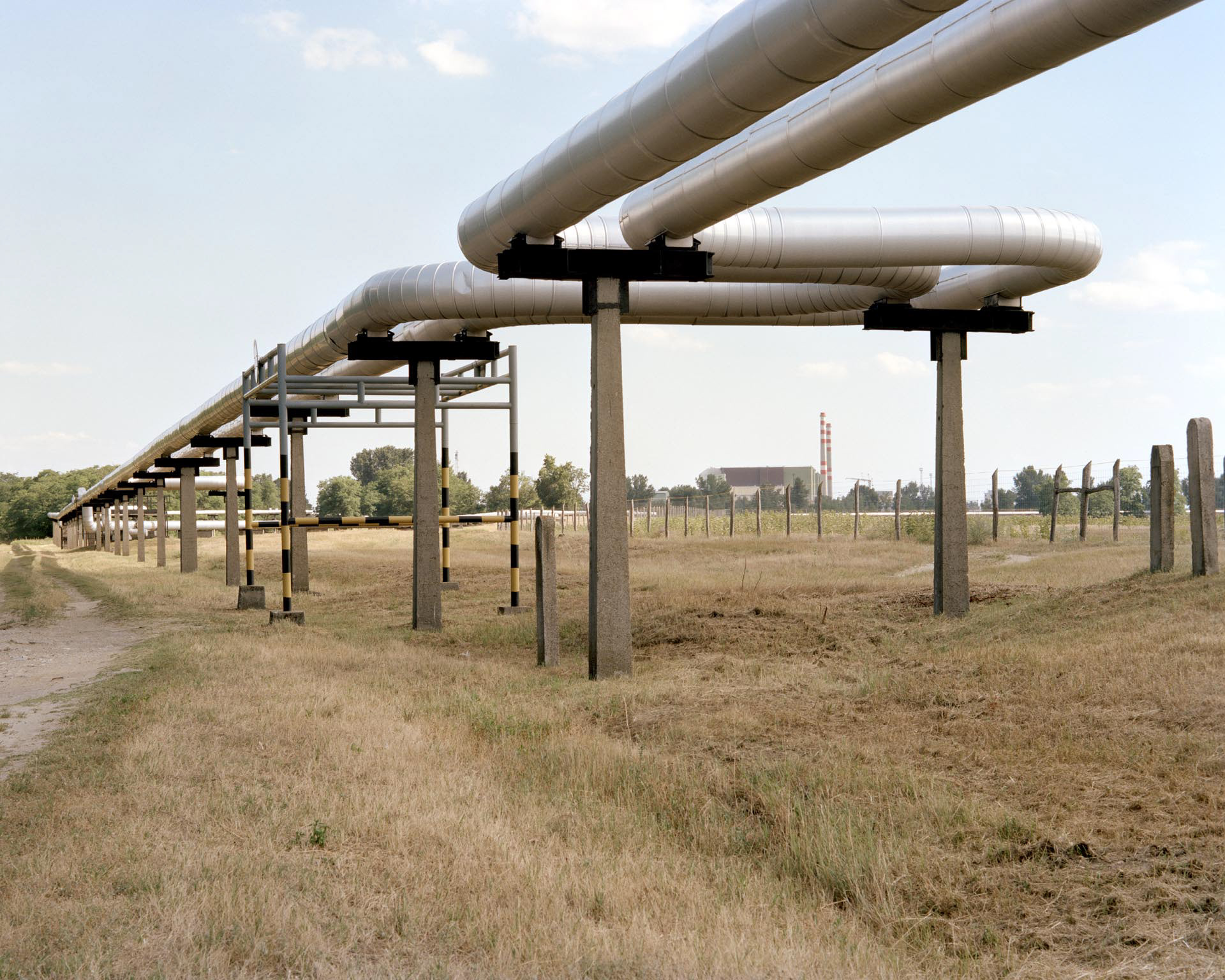
Paks, Hungary. Despite Hungary's significant unconventional gas deposits, the Prime Minister Viktor Orbàn decided not to exploit these resources in the country. On the other hand, in 2014 Hungary signed a general agreement with Russia on cooperation in the use of nuclear energy for peaceful purposes. The Russian state company Rosatom will finance with 10 billion Euro the construction of two new reactors of the Paks nuclear power plant, the first and only operating in Hungary

Paltinis, Romania. Ioan and Maria in the courtyard of their house. Paltinis is a village located in a peripheral area of Vaslui county and it is mostly inhabited by gypsies, whose lives strongly depend on agriculture and farming. In Paltinis, Chevron had planned to drill its second well for shale gas extraction of Romania. Yet, in February 2015, Chevron officially quit Romania due to “poor exploration results and prolonged protests by environmentalists”
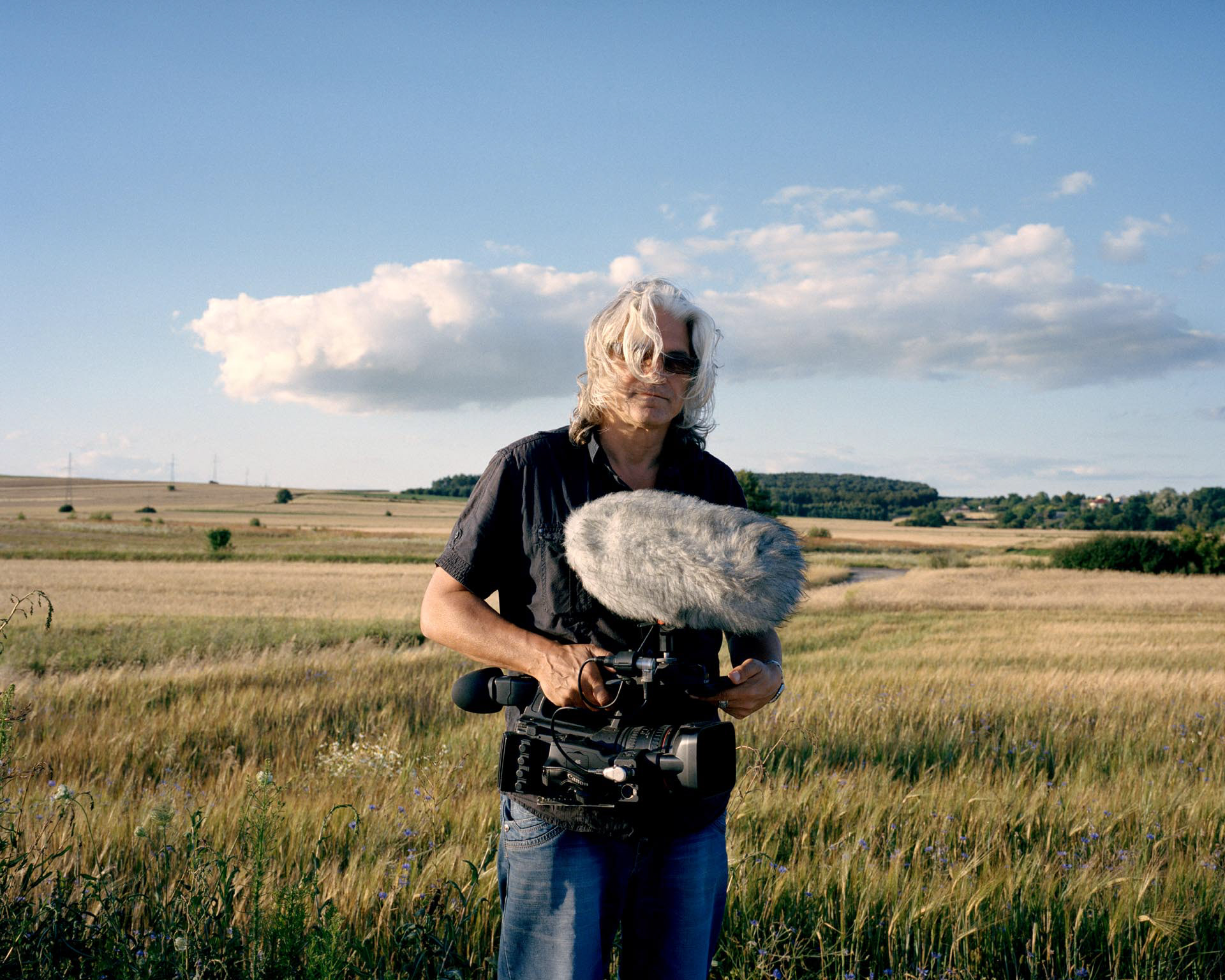
Krupe, Poland. The Polish-American director, Lech Kowalski, during the shooting of his latest documentary, Drill Baby Drill, dedicated to shale gas extractions in Europe and United States
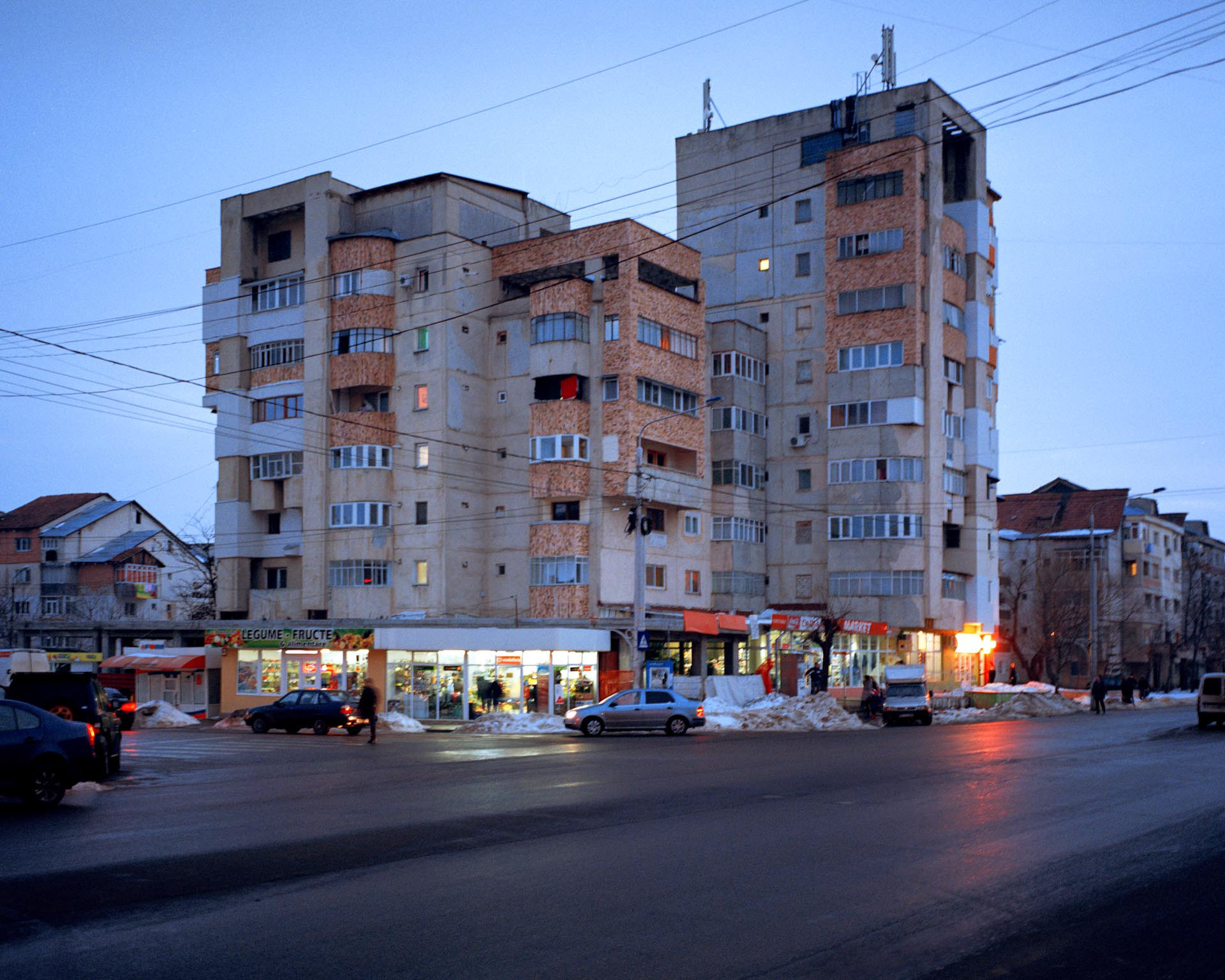
Barlad, Romania. Barlad, Vaslui county, is the city where the first Romanian anti-fracking riots started in 2012. During these events the population officially asked the government to impose the immediate cancellation or suspension of concessions for shale gas exploitation in the country and a moratorium on fracking
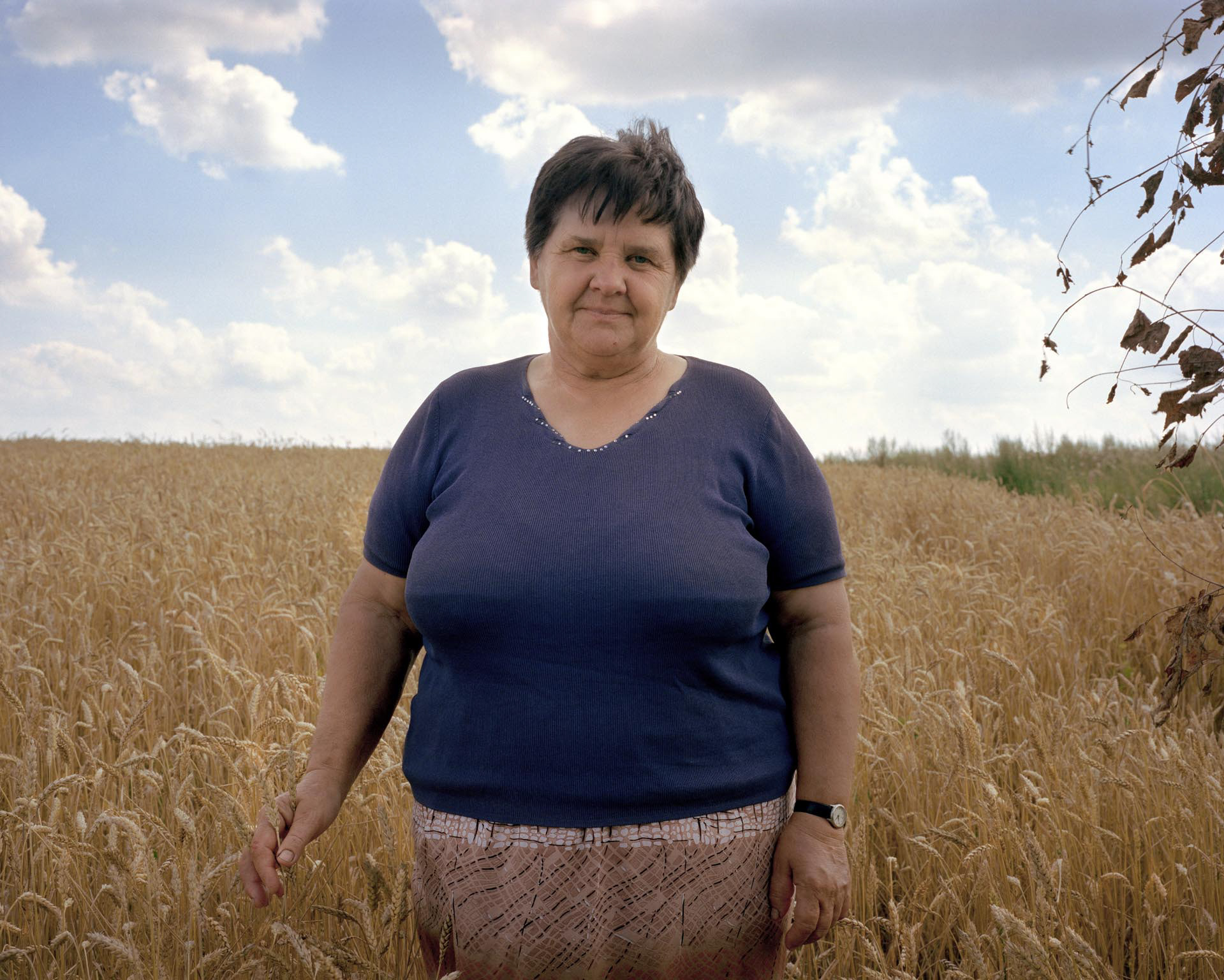
Zurawlow, Poland. Henryka is a farmer from the village of Zurawlow, in south-eastern Poland. Chevron was about to rise up a drilling site in Zurawlow for shale gas extractions. After 400 days of protests and permanent occupation of their fields, the villagers managed to block Chevron's intention and to stop the operations
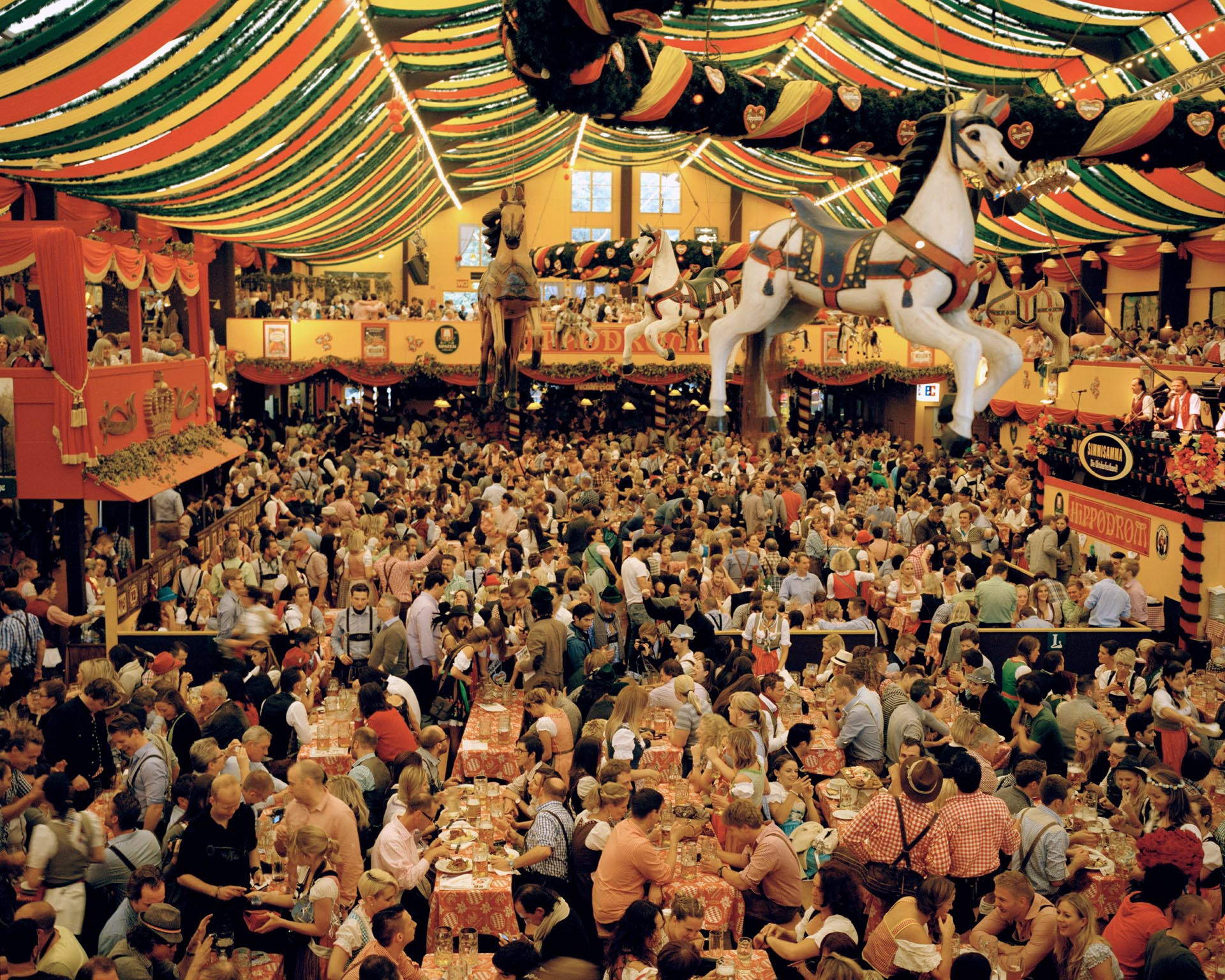
Munich, Germany. Oktoberfest is the world's most famous beer Festival and largest funfair, held annually in Munich, southern Germany. In 2013 the German Brewers Federation strongly opposed the draft regulations concerning the exploitation of unconventional gas and the use of fracking in the country because the legal changes planned by the federal government were “not sufficient to guarantee the security of drinking water supplies and to take into account the requirements of the German Beer Purity Law”, which only allows water, barley and hops in the production of beer. For now shale gas explorations are blocked in Germany, although the country is estimated to have between 700 and 2300 billion cubic meters of shale gas reserves, according to the Federal Institute for Geosciences and Natural Resources.
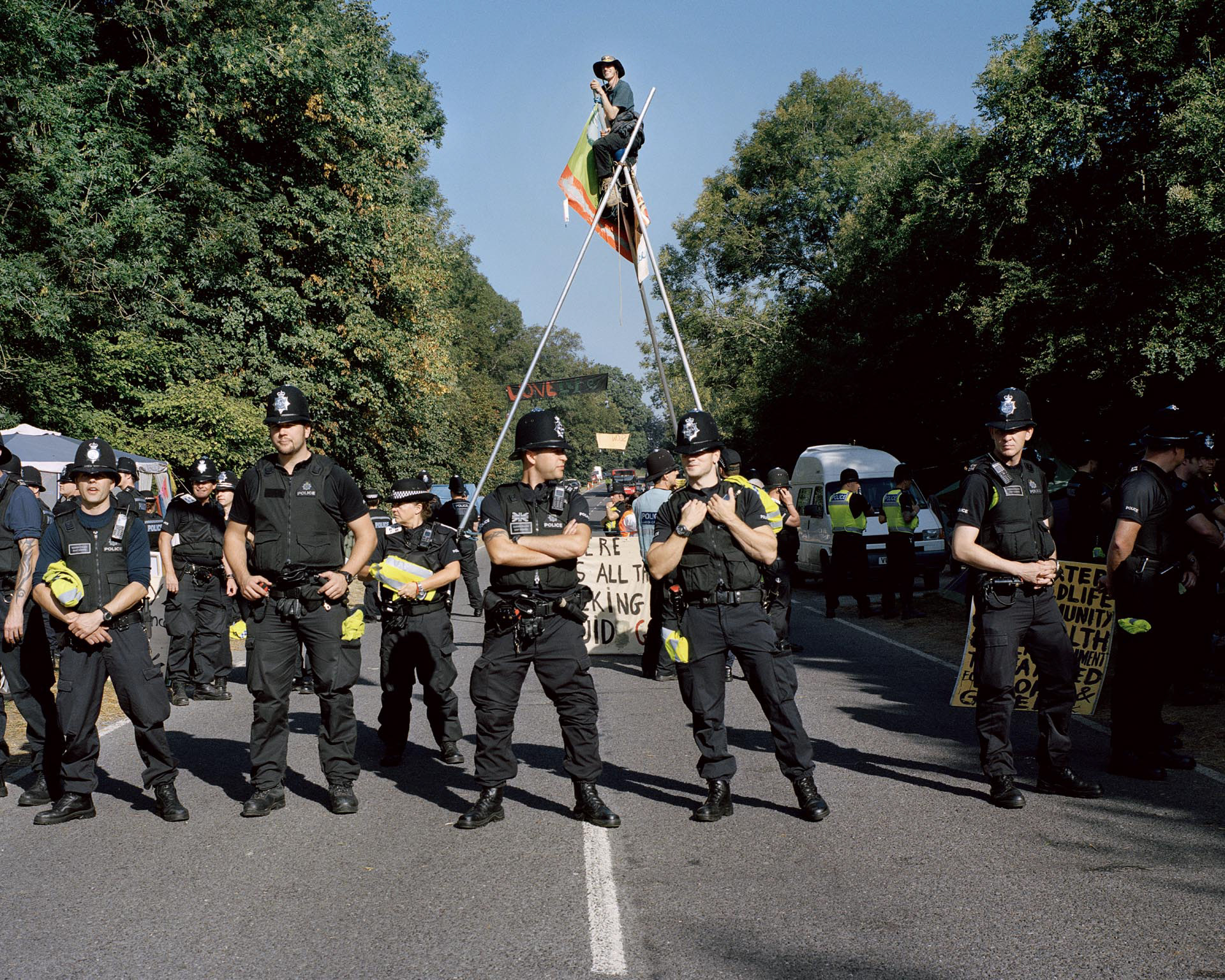
Balcombe, United Kingdom. The British anti-fracking movement is characterized by spectacular actions. After blocking the road for a few hours with a huge tripod on which he was sitting, Jamie was captured and arrested by the police
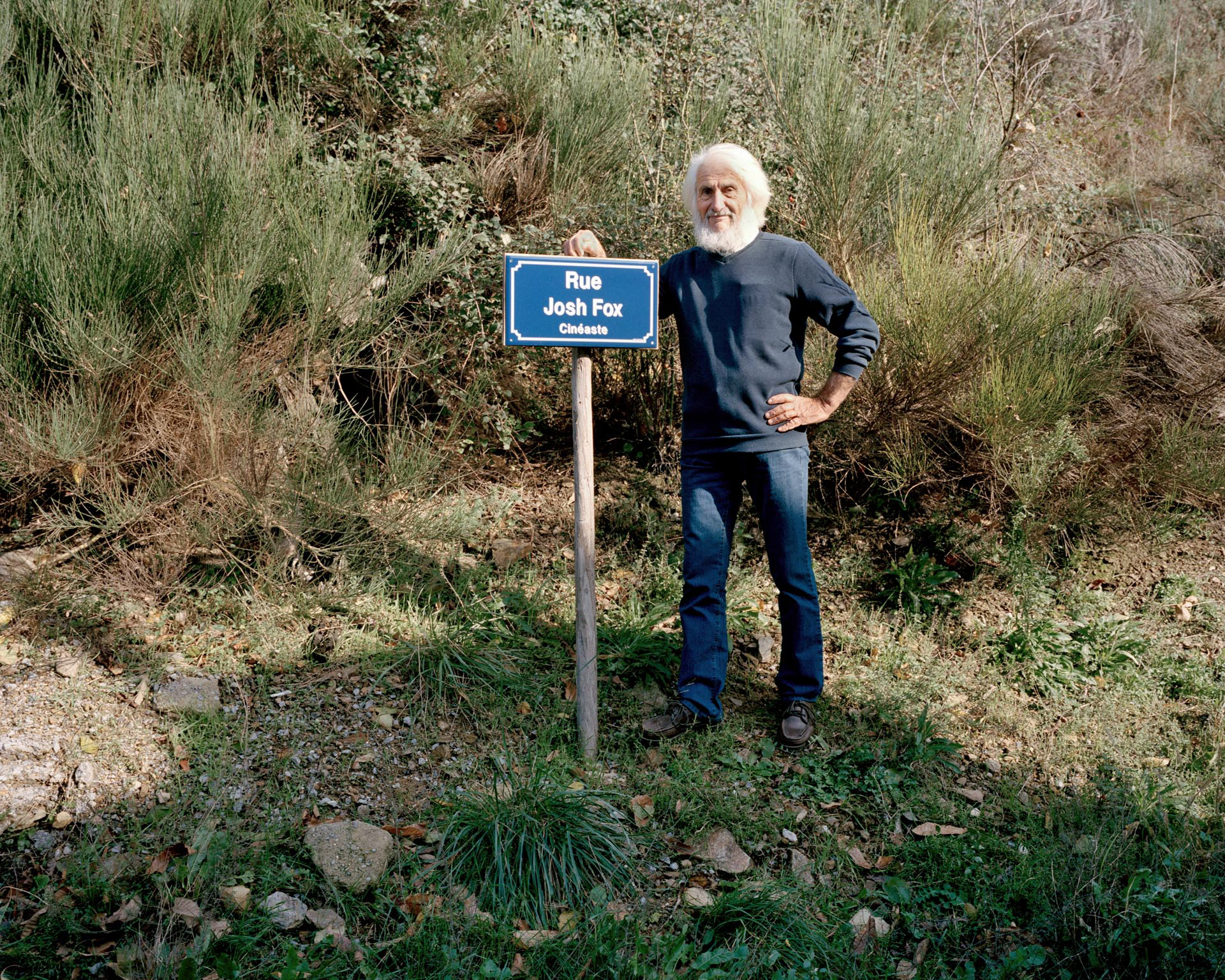
Aujac, France. André Agniel, former Mayor of Aujac from 2001 to 2014, poses next to the Rue Josh Fox plate. This street has been named after the young American director and activist Josh Fox, author of Gasland. In 2010 this documentary was the first and the most important testimony against fracking that led to the creation of several protest movements all over the world. Rue Josh Fox was inaugurated on the 29th of May 2014
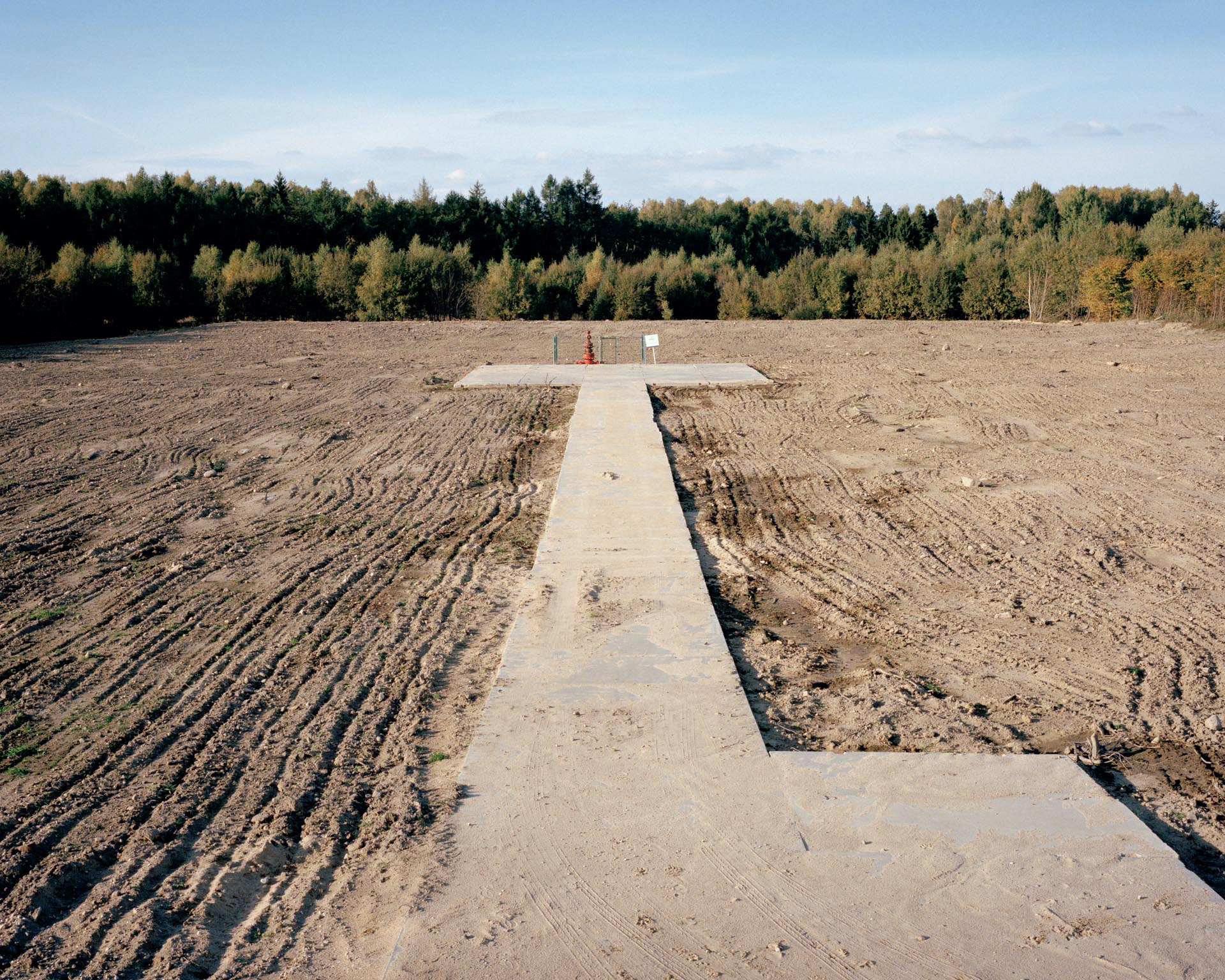
Miłowo, Poland. Deforestation caused by experimental tests of shale gas extractions in Milowo, northern Poland
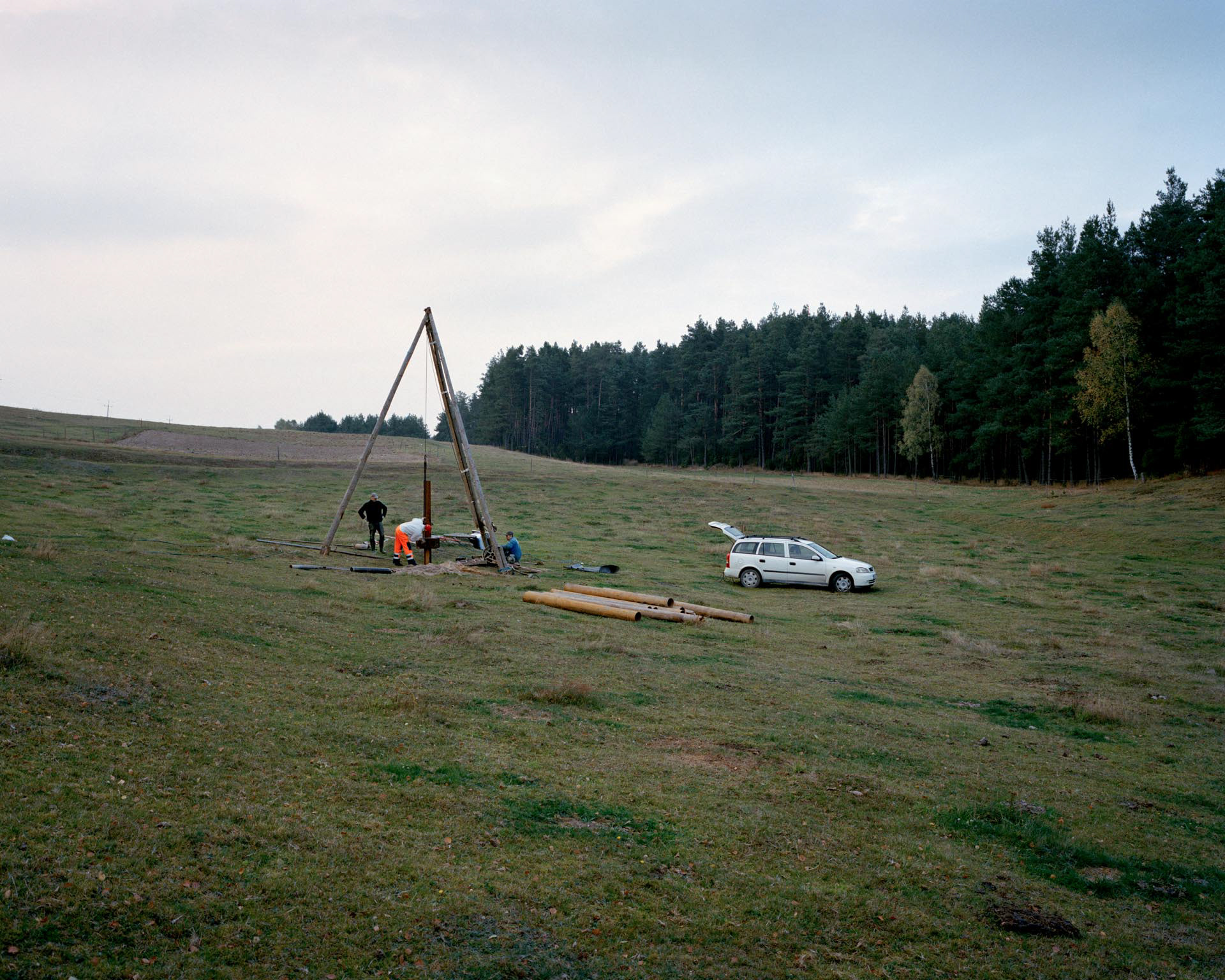
Ogonki, Poland. Edward Sawicki during the drilling of a personal water well for agricultural purposes. Edward is one of the most famous anti-fracking protester of northern Poland: his property is on one of the concessions granted by the Polish government for the exploration of unconventional gas
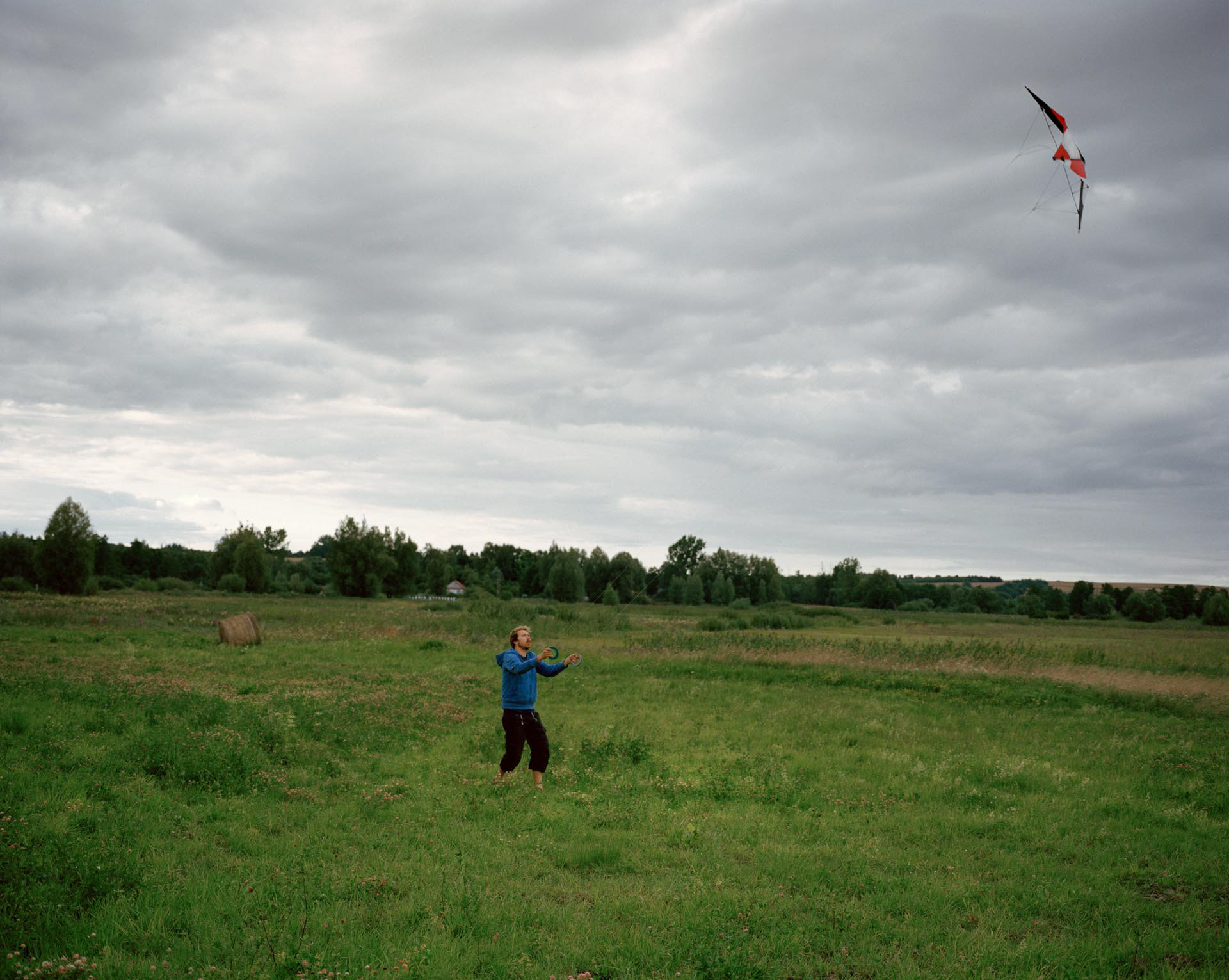
Zurawlow, Poland. Marcin is an activist from Warsaw: he moved to the village of Zurawlow to help the farmers during their anti-fracking protest. These lands have been identified and granted by the Polish government for the exploration of unconventional gas
